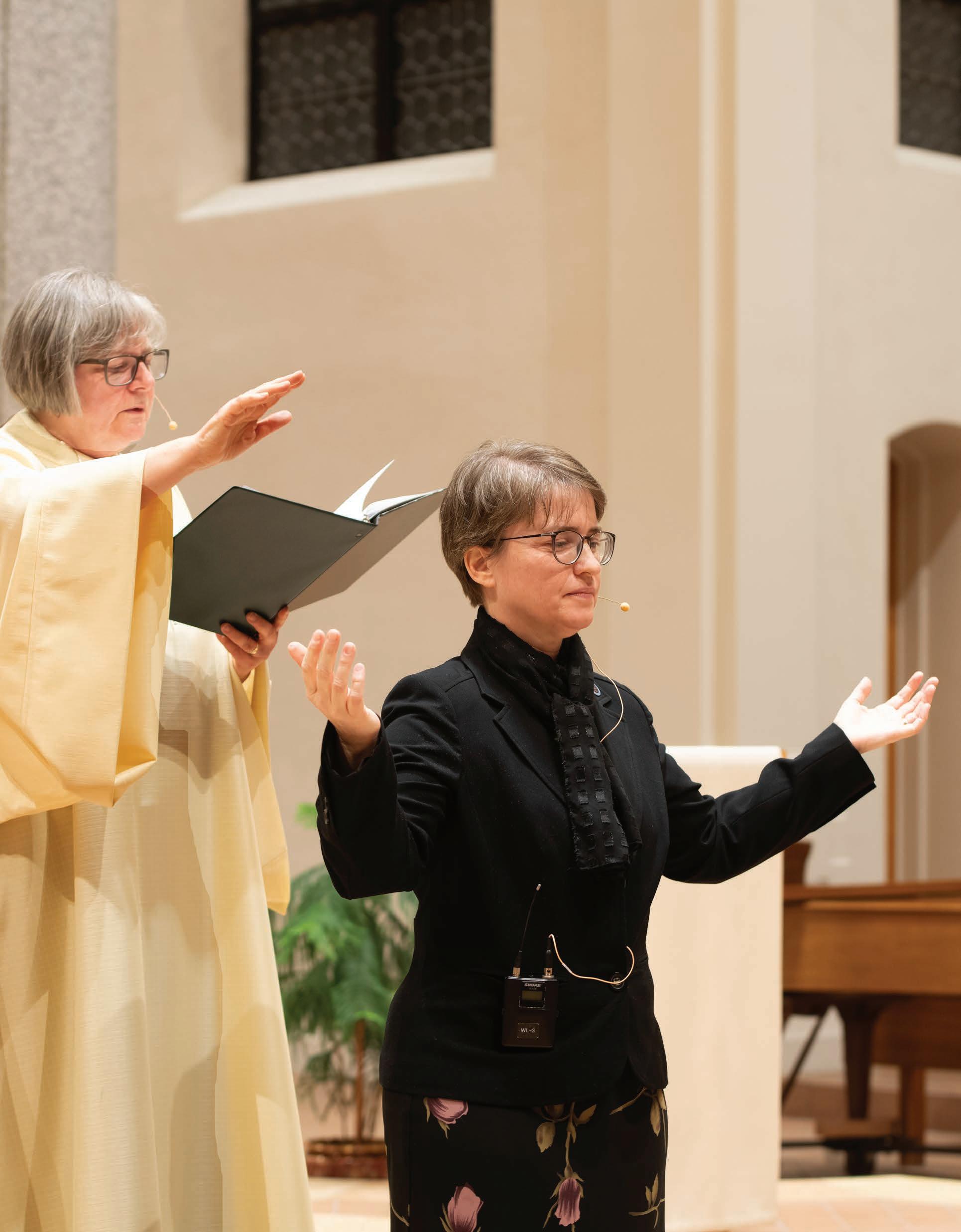




Karen Rose, OSB, Prioress
Putting together Call magazine is always a humbling experience as I learn how sisters celebrating their jubilees have lived out their monastic promises for decades. As someone who is unlikely to make it to my Golden Jubilee (I made first monastic profession in 2007 and would be 103 at the time of my Golden Jubilee), I am awestruck by the years of commitment that our jubilarians represent. As Jesus tells us in the Gospel, they did not choose Him—it was He who chose them (John 15:16). Yet, they all had a choice. They were called, they listened, and they chose to say “Yes.”
As you’ll learn when you read their profiles (pp. 5–6, 9–13), they didn’t say “Yes” once; they kept saying “Yes” throughout their 60, 75 and 80 years of professed life. That meant saying “Yes” not only when life went smoothly and God seemed close, but also when God seemed absent. What fine examples they are of perseverance, constancy and determination to remain faithful to their promises whatever life brought them. With grateful hearts, we congratulate them!
Perseverance and steadfast commitment are qualities all our sisters need right now. We are continuing to plan for the new monastery and are at the stage of sharing ideas and making decisions while at the same time trying to
downsize and imagine what it will be like to live in a much smaller space.
I’m sure many of you reading this will have experienced similar transitions. Your prayers are very welcome. Our community is deeply grateful to you for your support in so many ways, including your generosity in the past financial year (p. 24). As building progresses, we will be asking you to partner with us to help our ministries continue into the future.
Liturgy is a primary ministry. Donations from this magazine (unless you specify otherwise) and this year’s campaign for Give to the Max, Minnesota’s annual online giving event in November, will focus on raising money to build an organ for the new chapel—something that will bless the lives of all who attend our services. We would deeply appreciate your support.
With gratitude for our past, and hope in the future,
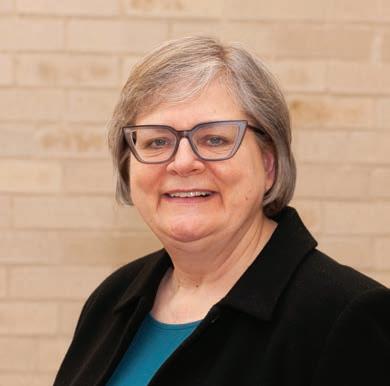

Karen Rose, OSB Prioress, Consultant Editor
Amanda Hackett Editor, Graphic Designer
Alyssa Tasto Assistant Editor
Renée Domeier, OSB Proofreader
On the Cover: Sister Catherine Duenne (right) transfers her monastic stability to Saint Benedict’s Monastery. Taken by Sister Nancy Bauer.
Photos:
Carleen Schomer, OSB, Karen Streveler, OSB, Marina Schlangen, OSB, Nancy Bauer, OSB, unless otherwise noted or supplied by individual sisters or Saint Benedict’s Monastery Archives.
Printing: Palmer Printing
Our Mission
We, the Sisters of the Order of Saint Benedict in St. Joseph, Minn., are a monastic community of women who seek God in our daily lives according to the Gospel and the Rule of Benedict. Through our ministry of prayer, work and community living, we listen and respond to the needs of the Church and the world.
Call is published annually by the Sisters of the Order of Saint Benedict, St. Joseph, Minn., and celebrates the sisters’ call and commitment to monastic life.
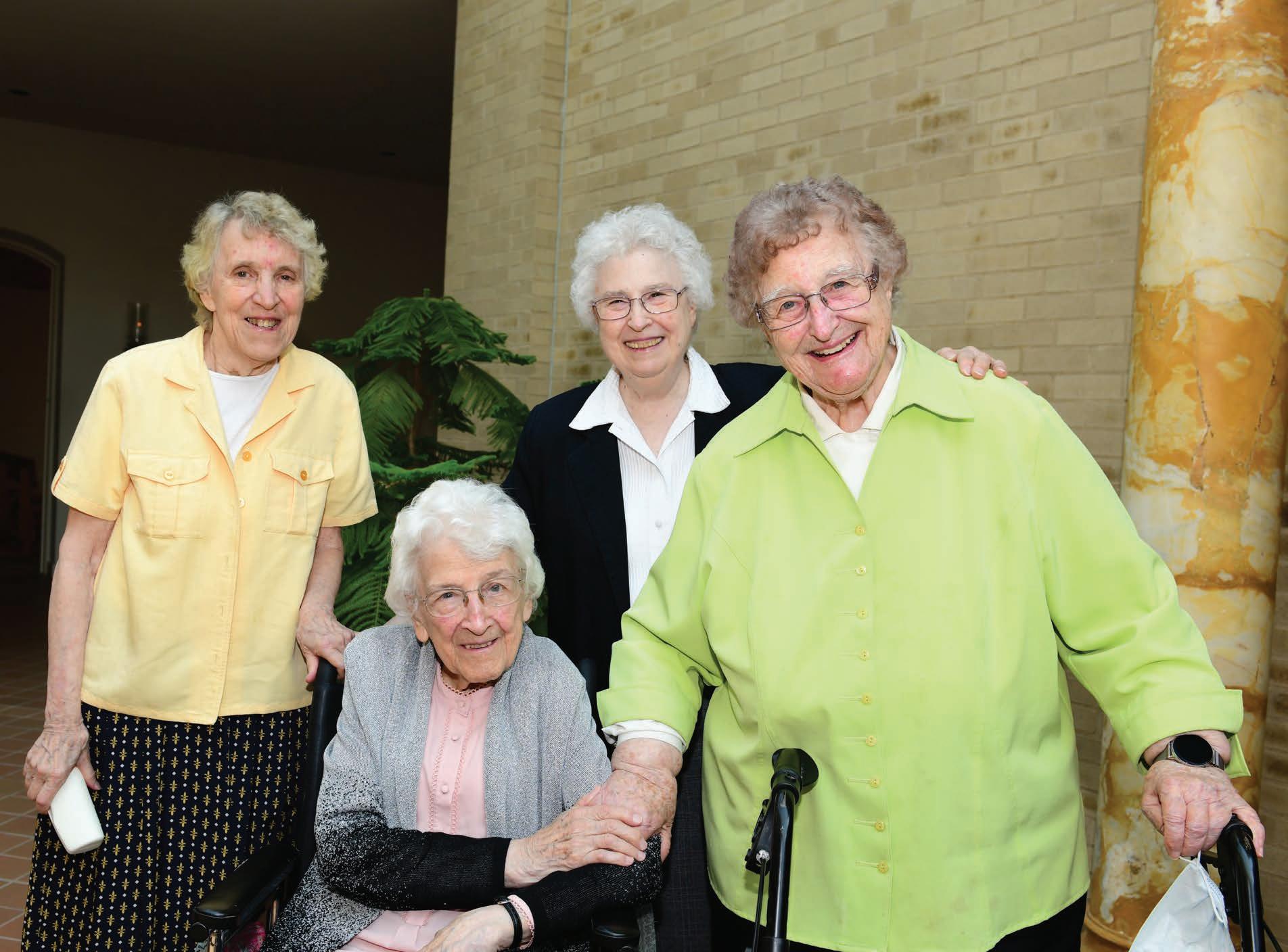
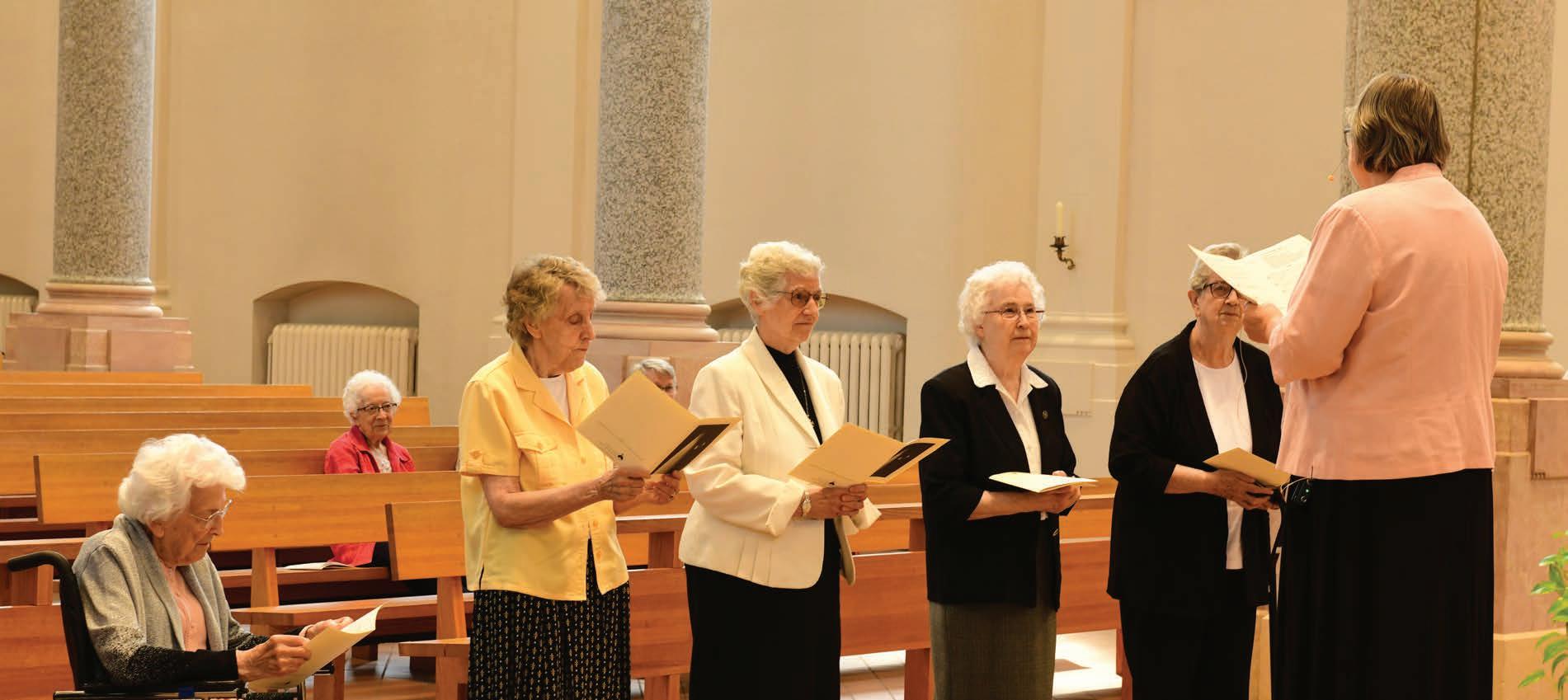
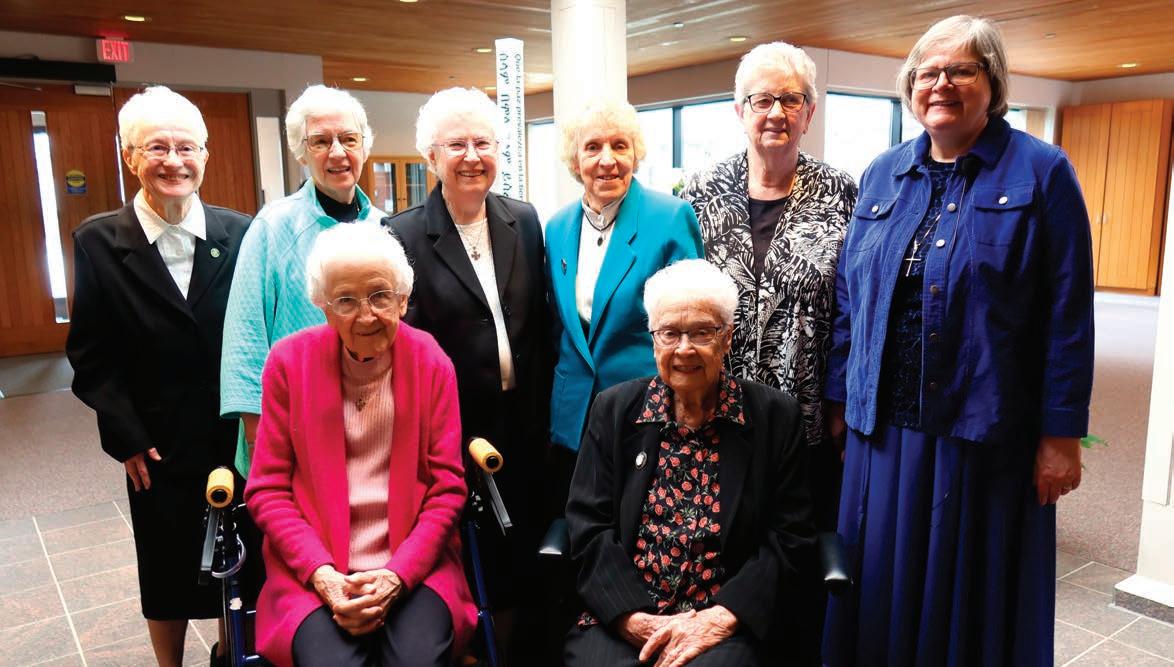
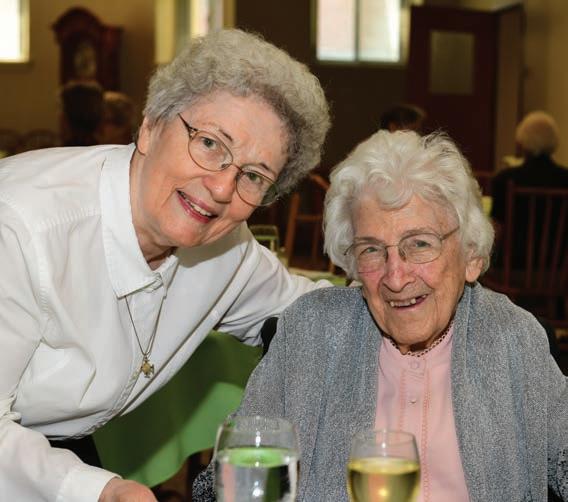
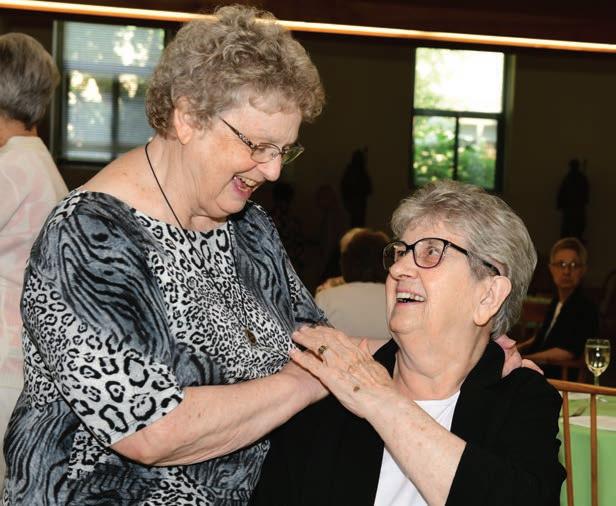
60 Years
Ann Marie Biermaier, OSB
Maribeth Theis, OSB
Mariterese Woida, OSB
Michaela Hedican, OSB
Ruth Feeney, OSB
75 Years
Dolores Super, OSB
80 Years
Jonathan Herda, OSB
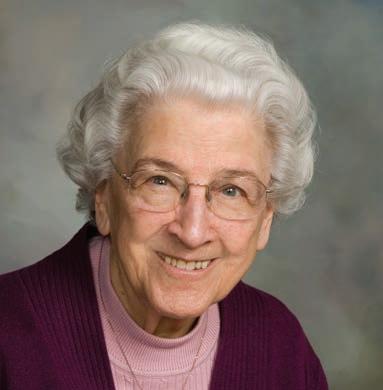
Rose Herda was born on a farm near Lonsdale, Minn., the fifth of 13 children. She and her siblings helped milk the cows in the early morning before going to school, and they sang in Czech as they milked. They also helped plant beans and potatoes and picked them when ready to harvest.
A happy child, Rose’s parents taught her by example to develop deep, reverent respect and appreciation for nature, her love for flowers, and walking many a mile. She and her brothers and sisters also made up games as they played together.
When reflecting on her vocation story, Rose stated, “As the time came for each of us to leave for our personal call, we would kneel by the family shrine—a small chapel Dad made which housed the statue of the Sacred Heart and the Blessed Mother. We would be blessed by our parents, asking God’s direction, blessing and faithfulness to our vocation. I have been blessed to be born into this family. God planted the seed in my soul at the early age of three. I felt the call … I was so happy.”
As a novice, Rose was given the name Sister Jonathan, and she shared that her first 18 years at home were like her novitiate. Her years in the novitiate weren’t easy; she became extremely ill and almost died, but she believes that experience only brought her closer to God.
During S. Jonathan’s first monastic profession in 1944, her parents thanked Sister Henrita Osendorf, the novice director, for all that the monastic community did for her. In return, S. Henrita told them that the community should thank them for their prime and lasting example to S. Jonathan as she was growing up.
Beatrice Eiynck, OSB
S. Jonathan’s professional life included 31 years of serving as an X-ray technologist at the St. Cloud Hospital in St. Cloud, Minn., and Queen of Peace Hospital in New Prague, Minn. During these years, she was active on the local, state and even national levels in radiology. It seemed she was a perpetual student. She also became a certified hospital chaplain, serving in ministry for most of her life in New Prague and other hospitals in Utah. In New Prague, she was chaplain, served dying patients, and trained women and men to be chaplains.
S. Jonathan’s profile is dominated by her compassion, wisdom and gentle, kind demeanor, all rooted deeply in her “adventure with Jesus.” She relates well with people and makes friends easily. I quote: “My mission is to bring the love of Jesus to whomever I meet and wherever I’m sent.” This she did and still does.
Part of S. Jonathan’s philosophy of aging is: “I perceive aging as a normal facet of the total process of life. I envision it to have its own distinctive challenges, frustrations and rewards. I am convinced that the best preparations for fruitful aging years is to live fully each NOW. Old age is the crowning part of one total NOW.”
At age 101, S. Jonathan continues to walk with the help of her walker, participate in the Liturgy of the Hours, eat meals in common, and write letters to her family.
“I feel at home. Jesus draws me closer and closer, and I am happier,” S. Jonathan said. “God is my best friend.”
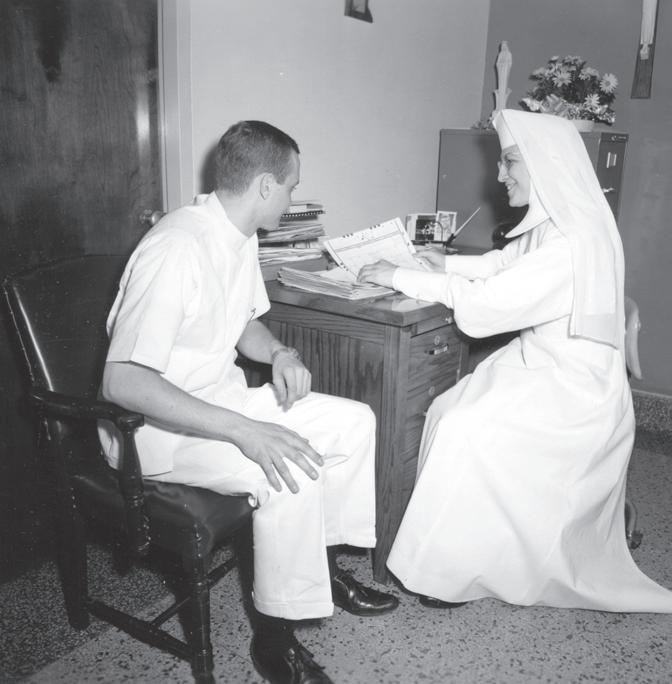
S. Jonathan (right) serving as director of the St. Cloud Hospital School of X-ray Technology in 1964. Photo provided by the St. Cloud Hospital Archives.
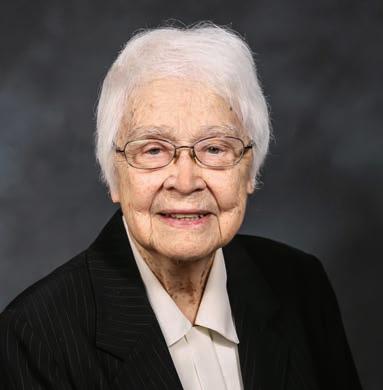
Sister Dolores Super was born in Little Falls, Minn., the 10th of Andrew and Elizabeth’s 11 children. Her father died when she was 14 years old, which left her mother to raise these 11 children alone. S. Dolores speaks very lovingly of her saintly mother who was the cook at a school where our Benedictine sisters taught. When she came for home visits, S. Dolores would go to the school and help her mother prepare and serve lunch to the children.
The Benedictine sisters were also S. Dolores’ teachers in the old Antlers Hotel in Little Falls, which served as a school, convent and rectory. It was there that she started taking piano lessons in the third grade. Her fingers danced over the keyboard so gracefully that by the seventh grade, she was playing the organ in church. S. Dolores finished her last two years of high school at Saint Benedict’s High School in St. Joseph, Minn., and graduated as a postulant.
After completing her novitiate at age 19, S. Dolores went to St. Mary’s in St. Cloud, Minn., to be the organist and music teacher. She received a master’s degree from Indiana University in Bloomington, Ind., then served for six years as organist and music teacher in Breckenridge, Minn. Ever obedient, at the wish of her prioress, S. Dolores completed her work in music and music education, earning her doctorate at the University of Michigan in Ann Arbor, Mich. Next followed 34 years of
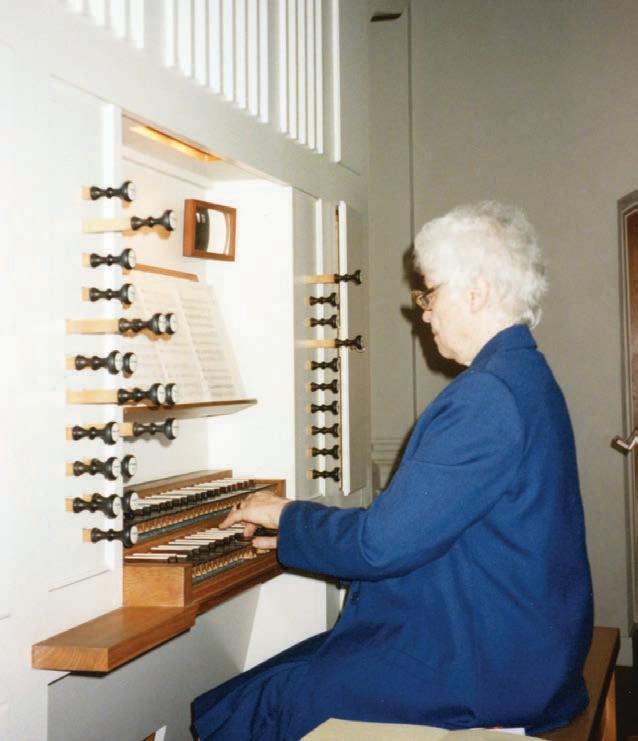
Ingrid Anderson, OSB, and Kathy Rademacher, OSB
service at the College of Saint Benedict (CSB) in St. Joseph from where she retired in 1994.
An accomplished musician, S. Dolores began her career with CSB in 1960, moving through the academic ranks to full professorship. She also served as chair of the music department for 16 years. Throughout her career, S. Dolores retained a deep love for music and performed a number of solo organ recitals. Playing and practicing were soul-recharging times for her. One of her friends recalls her saying, “No day spent with an hour of Bach is a bad day.”
In 1978, S. Dolores assumed responsibility for an administrative post with CSB’s academic affairs department. This was the first in a series of advancements in that area, leading to her appointment in 1983 as academic dean of the college. Prior to that appointment, S. Dolores’ job included responsibility for the academic programs in the Bahamas and for adult continuing education.
Aware of the necessity of preparing students for their place in the world, S. Dolores supported programs providing students with experience in other cultures. To learn for herself, she spent the fall of 1974 in St. Gallen, Switzerland, with CSB’s study abroad program. In 1996, S. Dolores and Sister Telan Hu led students to Beibei, Sichuan, China, in another study abroad program.
A seasoned professional, S. Dolores made numerous contributions to the broader community as a board member of CSB and the United Way of Central Minnesota, as well as chair of St. Cloud Hospital’s board of directors for 10 years. She was also one of the founders of Studium, the monastery’s program for scholars, and served as its first director. Under her leadership, Sister Karen Rose, the current prioress of Saint Benedict’s Monastery, was invited to be one of the Studium scholars. Great decision, S. Dolores!
Thank you, S. Dolores, for your many years of service. Congratulations as you celebrate your 75th jubilee!
“My Lord God, I have no idea where I am going … and the fact that I think I am following your will does not mean that I am actually doing so. But I believe that the desire to please you does in fact please you.”
This prayer excerpt from Thomas Merton’s Thoughts in Solitude has come to mind often since I first came across it when I was in college. We do not know where we are going or where God will lead us unless we are quiet enough to listen and courageous enough to respond. We are to be, as St. Hildegard envisioned, a “feather on the breath of God.”
My life has certainly taken some unexpected twists and turns, similar to those seen in the “Family Circus” comic strip. When Billy, Dolly or Jeffy is asked to come home or run an errand, they wander around, get distracted, jump, climb, and do somersaults, but eventually, after many twists and turns, they reach their destination. If I substitute the playground equipment for different events and places in my life, I have a perfect picture of my spiritual journey.
I joined the Benedictine sisters in Ferdinand, Ind., in 2001. I then became a music teacher in Louisville, Ky., and later a parish music director in the Ferdinand area. My life took an unexpected twist, or maybe even a somersault, in 2019 when I pursued a master’s degree at Saint John’s School of Theology and Seminary in Collegeville, Minn., and lived with the sisters at Saint Benedict’s Monastery in St. Joseph, Minn.
Two years later after completing my studies, I moved back to Indiana and began working in a parish in Indianapolis. All was going well, except there was one major change: I kept thinking about Minnesota. I found myself rooting for the Twins and Vikings, checking weather conditions, and even looking for employment opportunities in the Diocese of St. Cloud. Something was drawing me back to Saint Benedict’s Monastery.
Logically, nothing made sense to me about living in Minnesota. To begin with, I can barely handle 50-degree weather—how in the world would I survive Minnesota winters and subzero temperatures? Would hibernation be an option? It also meant I would be farther away from family, friends, professional contacts and the life to which I was accustomed. It was a confusing time for me. Like Merton stated, I had no idea where I was going.
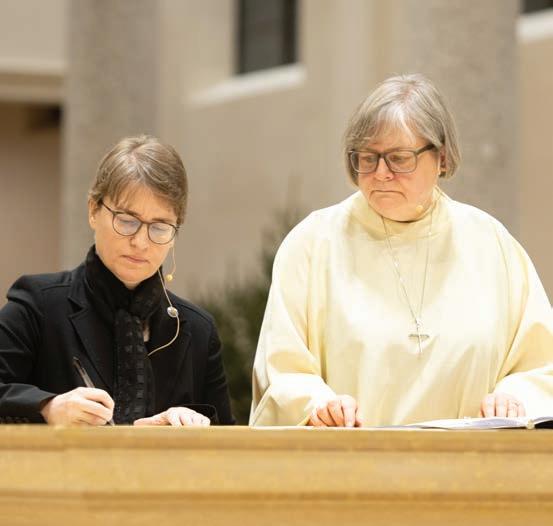
One day, everything changed when I had my one-year evaluation at the parish and the priest asked me, “Are you happy here?” Outwardly, I was. My ministry was going well, and I lived with great sisters. My life seemed ideal, but inwardly, I was still searching. I realized that to be happy and to follow God’s call meant I needed to transfer to Saint Benedict’s Monastery. I had been trying to make my plans work and stick with what was predictable and familiar. God, however, was calling me to listen, let go of what I know, take a leap of faith, and put my trust in God.
I am thankful for the crazy path on which God has led me and continues to lead me. All our twists and turns in life, like those in the “Family Circus” comic strip, prepare us for our next steps and keep us moving forward toward our final destination. Thomas Merton concludes his prayer, “Therefore will I trust you always … I will not fear, for you are ever with me, and you will never leave me…”
Now, when asked if I am happy here, I can boldly state:
“Yes, I am very happy here as a member of the Sisters of the Order of Saint Benedict in St. Joseph, Minn.”
Sister Janine Braun developed a passion for education early on in life. One of s six children, she was raised by faith-filled Catholic parents on a small dairy farm near Spring Hill, Minn. She attended Saint Benedict’s High School in St. Joseph, Minn., after being inspired by her eighth grade religion teacher, Sister Aniceta Drontle, to explore Benedictine life.
After graduation, S. Janine entered Saint Benedict’s Monastery with six of her classmates. She earned a bachelor’s degree in elementary education and German from the College of Saint Benedict under the mentorship of Sister Margaretta Nathe, was a Fulbright scholar, and received a master’s degree in administration from the University of St. Thomas in St. Paul, Minn. She is FLES-certified (Foreign Language in Elementary School) and studied at Clarke College in Dubuque, Iowa, and St. Paul Seminary in St. Paul.
Her journey as an educator officially began in 1969 when she completed her student teaching at St. Paul’s School in St. Cloud, Minn., and continued to teach sixth grade there for two years. S. Janine has now served in education in the Diocese of St. Cloud for 50 years. “I never felt I was going to work,” she says. “For me, it was always a joyful experience.”
She considers it a blessing and privilege to have held multiple positions through several diocesan parishes including those in the Minnesota cities of Sauk Centre, Meire Grove/Greenwald, Osakis and Freeport. She has served as a director, administrator and teacher of both general and religious education.
S. Janine was first assigned to Sacred Heart School (SHS) in Freeport in 2003. She then served a six-year term on the leadership team at Saint
Alyssa Tasto
Benedict’s Monastery under Sister Nancy Bauer, who was prioress of Saint Benedict’s Monastery from 2005–2011. After completing her term, S. Janine was delighted to be asked back to SHS in 2011 and remained there until her retirement in 2024.
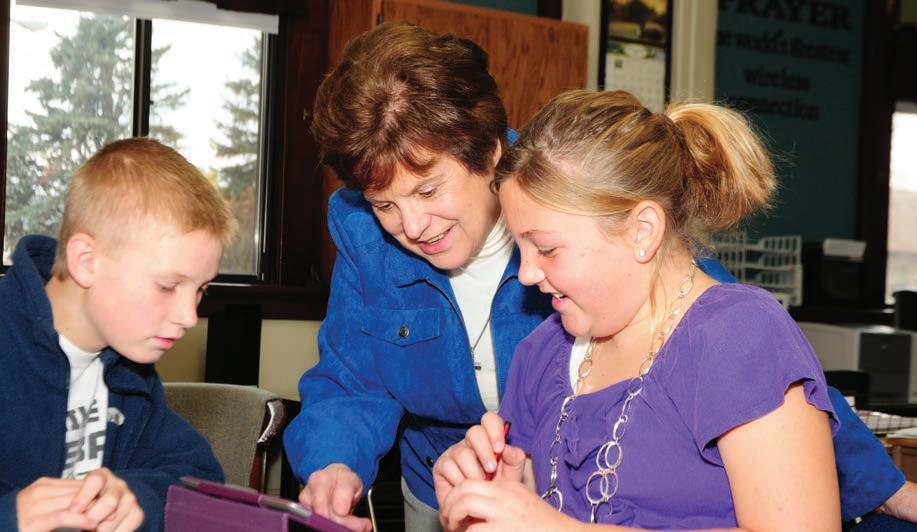
S. Janine’s most treasured memories surround the growth and creativity of students in each of her unique classes throughout the years. She is grateful to have helped develop engaging programs with her colleagues, noting each initiative as a team effort. Projects like the Accelerated Reader program were introduced throughout the diocese, while others such as a Halloween vocabulary parade and One-School-One-Book initiative were implemented at the school level. She also shared a love for theater with students through drama activities. In Sauk Centre, she worked with Sister Philip Zimmer and other faculty to put on a spring musical production with students. At SHS, she oversaw the sixth grade Christmas program, a performance written and produced by students each year.
The time for Benedictine sisters to teach full time within the diocese has ended for now, and S. Janine looks back on this ministry with utmost gratitude. “I have had many blessings,” she says, looking forward to whatever the next chapter may bring.

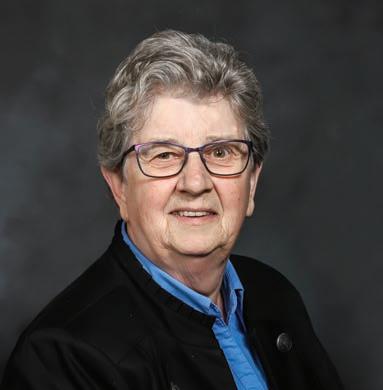
Whether it is the loving smile on her face, the wave of her hand to come forward in Sacred Heart Chapel, or the invitation to a cup of coffee in Studium, Sister Ann Marie Biermaier displays her gift of hospitality. She learned this spirit from her parents, George and Helen, growing up in Browerville, Minn., with her brothers Louis, Dennis and Ron, and sister, Karen. This openness to other people served her well in her ministries of teaching and principalship in schools in Minnesota, as chair of the College of Saint Benedict and Saint John’s University education department for more than 15 years, as dean of higher education in the Bahamas, as current Catholic co-chair of the Bridgefolk Catholic Mennonite organization, and presently as director of Studium, our scholars’ program at Saint Benedict’s Monastery.
S. Ann Marie’s gift of creating space where all are welcome holds true in what we witness in her awareness and generosity in extending recognition and care of the other. There is also an interior hospitality that she has nurtured over time; this hospitality may not be as evident to those who do not know her well.
Sisters Ann Marie (left) and Theresa Schumacher enjoying a weekend on one of the Family Islands in the Bahamas
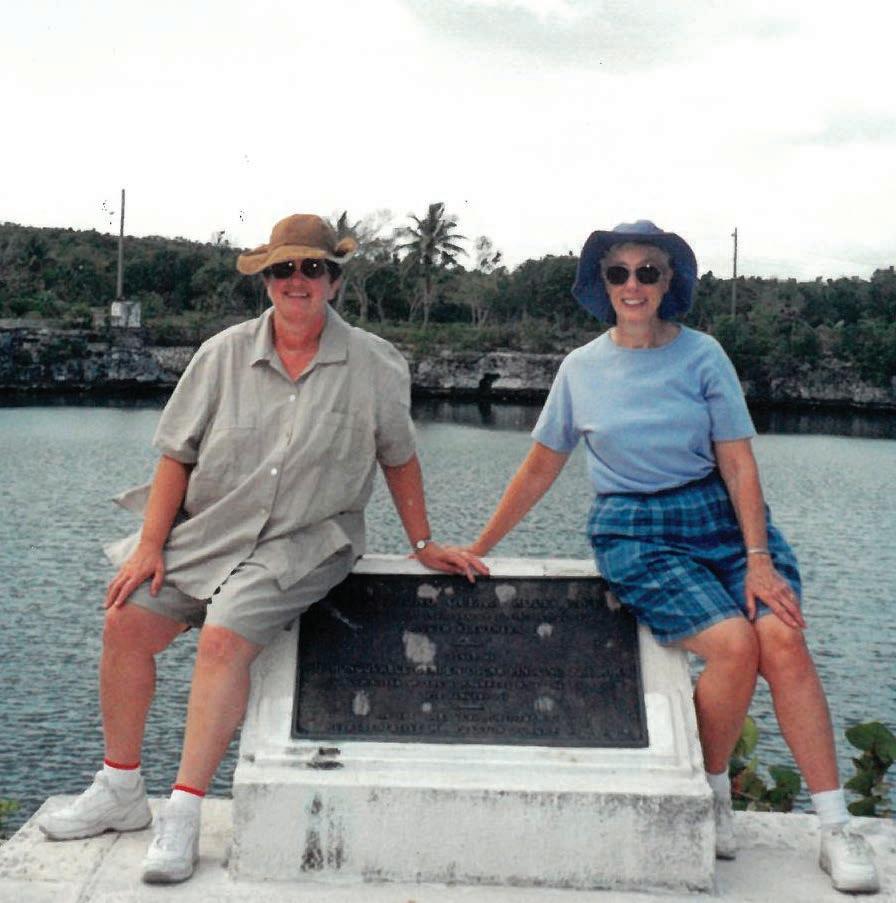
S. Ann Marie’s hospitality engages the rugged terrain of disappointment, times when personal hopes and dreams seem out of reach It engages the awareness of conflicts that can only heal with engagement of the other and forgiveness sought after or extended, as well as the anguish of loss in its myriad forms which take one down the path of loneliness and uncertainty This rugged terrain holds the question of, “Who am I in this time of my life?” Hospitality to the evolution of self, in all its stages, is holy work. This hospitality has penetrated S. Ann Marie’s heart with compassion, gratitude and freedom to put Christ above all in all ways of being.
Eunice Antony, OSB, and Mary Catherine Holicky, OSB
Living within community with S. Ann Marie these past 60 years:
We share the delight of a Dairy Queen run.
We walk with her to the holy ground where her dear friend, Sister Theresa Schumacher, rests.
We laugh and cry as stories are shared.
We dream of finding ways to be peace.
We see the very young awaken her heart to love and joy.
We witness to her joy at being called “Babah” by her adopted intercultural friends.
We sit around the tables of inclusion with the marginalized and forgotten.
We participate in the Walk to Defeat ALS through her invitation.
We are encouraged to vote and be aware of the world around us.
We claim with her the mantra: “The love of learning and desire for God.” (Jean Leclercq)
And so much more.
We celebrate you, S. Ann Marie, for your fidelity to the monastic way of life over these 60 years.
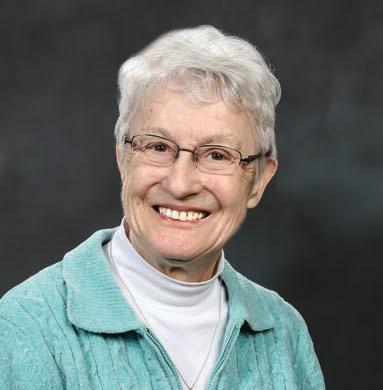
It was a bitterly cold day on January 6, 1942, when Janet Marie Theis (Sister Maribeth) was welcomed into the world by her parents, John and Marian, and two brothers, Don and Leo. As time passed, her siblings Paul and Judy joined the Theis family.
Growing up on a small dairy farm provided opportunities for spending afternoons in the woods with the Holstein cows and the family dog. S. Maribeth developed a love of the smell of freshly cut alfalfa hay, and her favorite Christmas gift was a bike. In the summer, her family planted a huge vegetable garden and played jump rope, hopscotch, jacks, kick the can, hide and seek, tag and baseball, and wintertime fun included sledding, tobogganing, skiing and ice skating. S. Maribeth’s family lived on a gravel road called “Theis Crossroad”—four Theis families lived on farms along that road.
After graduating from the College of Saint Benedict in St. Joseph, Minn., S. Maribeth’s first teaching experience was in Pierz, Minn., with 43 second graders. She knew she had found her niche. As the years passed, she continued her “Joy Job” as a teacher, mainly in grades one and two.
S. Maribeth was an inspiration to her teachers and students. As my principal in Maple Lake, Minn., I discovered how professional she was, and everything was done to perfection. We teachers
Jean Schwartz, OSB
appreciated her organizational skills and how she brought out the best gifts in each one of us. She also received a special tribute from one of her students: “I met the woman who inspired me to chase every dream I’ve ever had while being humble, grateful and generous. In second grade, I met my all-time biggest, most reassured role model ... This woman was my teacher, Sister Maribeth Theis.”
After three surgeries for cancer, S. Maribeth realized she no longer had the stamina to teach. She continued to work in the education arena as supervisor of College of Saint Benedict and Saint John’s University students doing their student teaching experiences. She also worked in the St. Joseph Catholic School library, then in the monastery library. In 2011, she was asked to work in the library at Saint Scholastica Convent, our retirement home, a position she loved. She left the library for some years but now continues working there on a part-time basis.
S. Maribeth’s best friend is chocolate, and she looks forward to any outing that includes Dairy Queen, Culver’s or Pizza Ranch. You can’t miss her enthusiasm for the Minnesota Twins and Vikings. S. Maribeth also always looks forward to her Big Birch Lake vacation group. Their theme was, “O Lord, it’s hard to be humble when you’re perfect in every way…”
Here at Saint Scholastica Convent, in this quiet, wooded space with caring employees, each sister can be her unique self. It is a good life! S. Maribeth is grateful to all who have supported and loved her during her life journey of 60 years as a Benedictine sister.
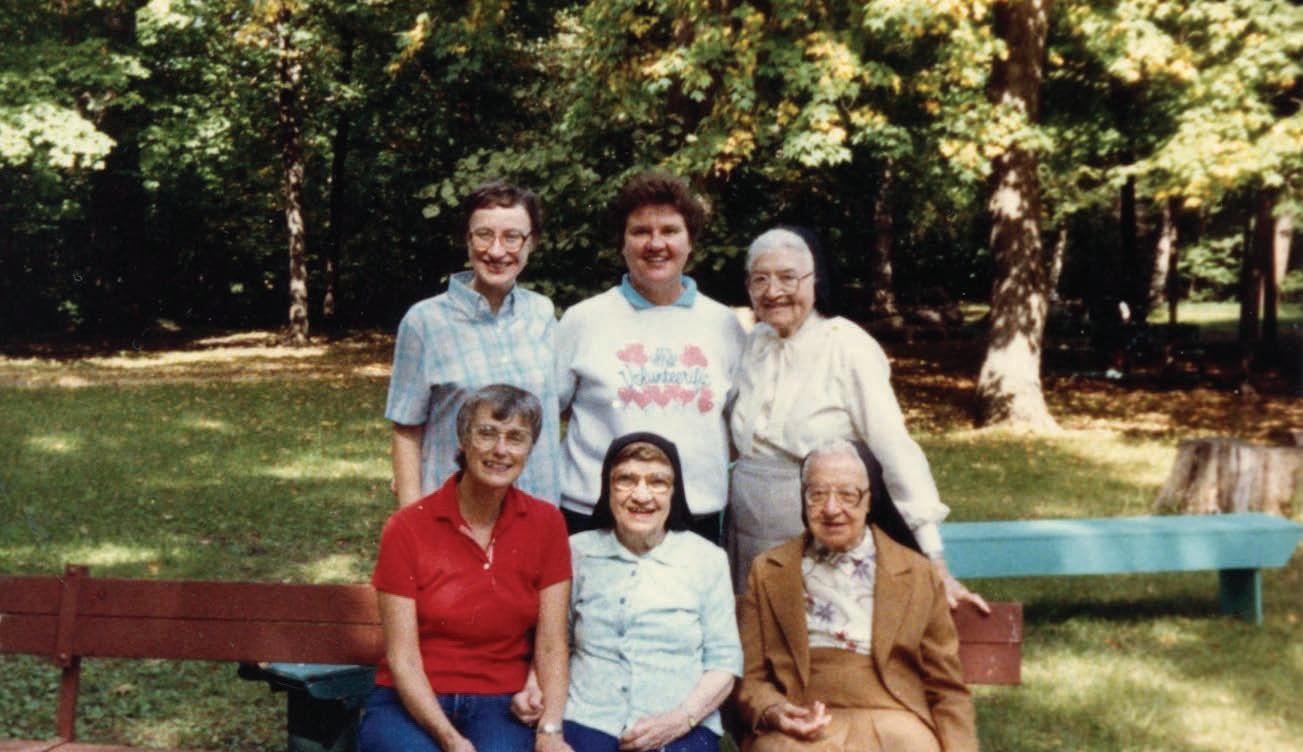
Sisters on mission at St. Timothy’s Convent and School, Maple Lake, Minn., enjoying a day at the sisters’ lodge.
Standing (left to right): Sisters Maribeth Theis, Jean Schwartz and Celine Kraker.
Seated (left to right): Sisters Owen Lindblad, Bernette Strel and Mary Conrad Buttweiler.
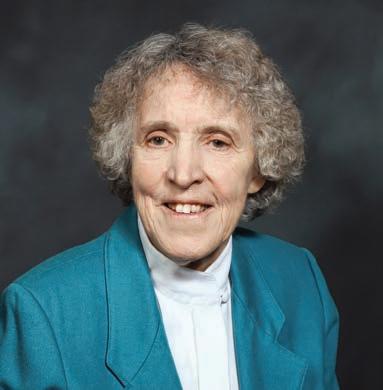
Sister Mariterese (Theresa) Woida was the third daughter and the sixth of seven children born at home in Minnesota’s Douglas County to Theresia (Klimek) and August Woida on January 9, 1943. She grew up on a farm in Ottertail County and went to Sacred Heart Grade School in Urbank, Minn., which was taught by the Benedictine sisters. In eighth grade, she attended a country school since her father had retired from farming and the family moved. She had three brothers and three sisters, and two of her brothers are now deceased. She also has many nieces and nephews.
In eighth grade, S. Mariterese participated in a spelling contest and went to the county bee. She also participated in a diocesan catechetical contest and won a scholarship that paid part of her tuition to Saint Benedict’s High School in St. Joseph, Minn.
Two of S. Mariterese’s aunts were religious sisters. Her mother’s sister was a nurse in the Franciscan order in Little Falls, Minn., and her father’s sister was a Benedictine who joined the monastery in St. Joseph but transferred to Annunciation Monastery in Bismarck, N.D., when it became independent; she had been teaching math at a high school in North Dakota.
A year after high school, S. Mariterese returned to St. Joseph to join the Benedictine sisters. She taught and was principal in elementary schools in Minnesota. She eventually got a master’s
degree in curriculum and instruction at the University of Minnesota in Minneapolis, Minn., and taught briefly in the education department of the College of Saint Benedict in St. Joseph.
S. Mariterese served as the planning facilitator under the leadership of Sister Mary Reuter, who was prioress of Saint Benedict’s Monastery from 1989–1995. During this time, plans were made to renovate and update the main building and St. Walburg’s Hall. S. Mariterese was also the monastery archivist for several years and currently works part time in the monastery’s secretarial office.
Thomasette Scheeler, OSB, and Mary Rachel Kuebelbeck, OSB
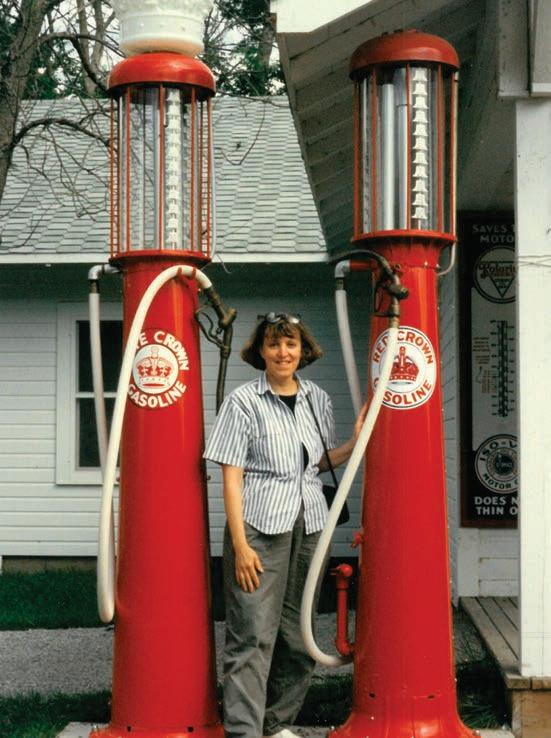
Visiting a Minnesota historical site on the Mille Lacs Reservation
S. Mariterese enjoys the outdoors and reading. She reads the daily paper, completes the puzzles, and appreciates the selection of books in the monastery library, especially biographies. Her friends would say she knows how to ask important questions and has the gift of entertaining others with childhood memories of songs and games.
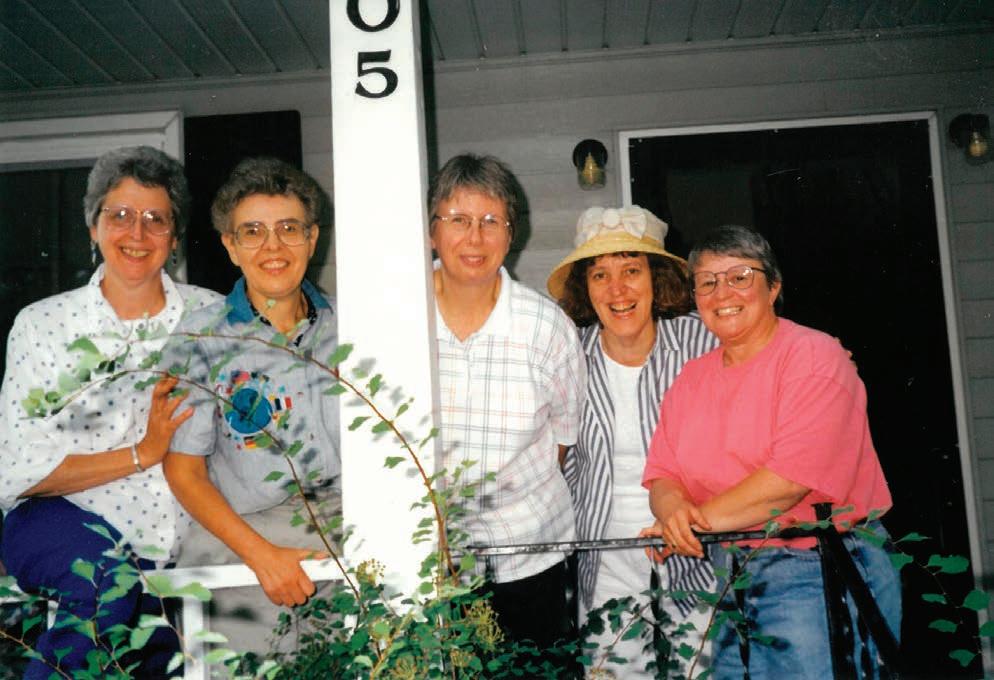
Left to right:
Sisters Mary Rachel Kuebelbeck, Marlene Meierhofer, Hélène Mercier, Mariterese Woida and Thomasette Scheeler
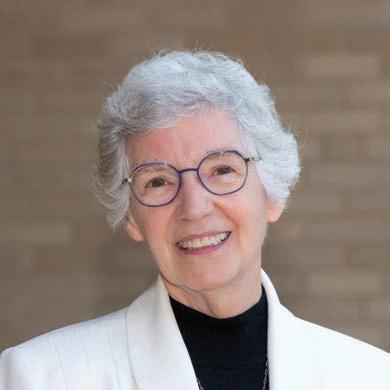
Sister Michaela Hedican has described herself as “Benedictine to the bone marrow.” She could hardly have escaped this fate.
Born and baptized
“Michelle” in the northern Minnesota town of Virginia, she encountered Benedictine sisters from nearby Duluth, Minn., at an early age. She recalls the day her grandmother treated the sisters and six-yearold Michelle to ice cream: The girl was smitten with the sisters’ excitement over such a simple treat and decided then and there that she wanted to be like them.
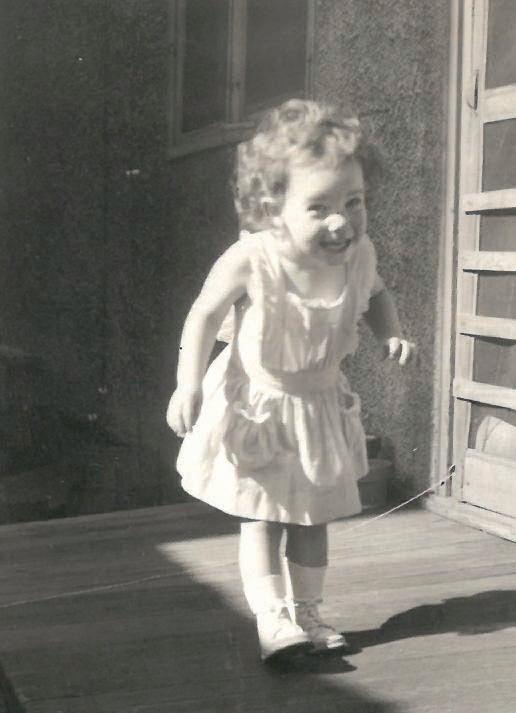
When Robert and Marjorie Hedican moved their family to Eau Claire, Wis., Michelle attended Regis High School where she was taught and inspired by more Benedictines—the sisters of the local Saint Bede Monastery. True to her childhood impulse, Michelle entered Saint Bede’s as a postulant on August 28, 1962, just before her 17th birthday, and made her first profession as Sister Michaela on July 11, 1964.
S. Michaela identifies the day she entered and her first monastic profession as the two most significant events in her 60 years of Benedictine life. She also cherishes the day in 2010 when she and the rest of the Saint Bede sisters transferred to Saint Benedict’s Monastery, from which Saint Bede’s was founded and which they had affectionately called “Grandma’s House.”
While S. Michaela served as a teacher in the
early years of her religious life, she has spent most of her years in administration and leadership. At Saint Bede Monastery, she served as vocation and formation director, director of Saint Bede Center, subprioress, and as the monastery’s final prioress. From 2003–2010, she was president of the Federation of Saint Benedict, now called the Monastic Congregation of Saint Benedict.
Since coming to Saint Benedict’s Monastery, S. Michaela has served as prioress and director of oblates, currently serving as director of mission advancement. In addition, she has inspired thousands of Benedictines and others as a retreat director, spiritual director, speaker, member of college and hospital boards, and as a faithful friend. She has received honorary doctorates from three Benedictine colleges in Minnesota: the College of St. Scholastica, Duluth; the College of Saint Benedict, St. Joseph; and Saint John’s University, Collegeville. In 2016, S. Michaela and Bishop Donald Kettler, then-bishop of the Diocese of St. Cloud, were named by Our Sunday Visitor among the 10 Catholics of the Year for promoting understanding between Christians and Somali immigrants.
S. Michaela has lived intensely, joyfully and gratefully the Benedictine ideals of prayer, community and service. Just as bone marrow is essential to the human body, being Benedictine is essential to S. Michaela’s spirit. On the occasion of her 60th jubilee, she would like to ask Christ this one question: “What shall I return to you, O Lord, for all your goodness to me?”
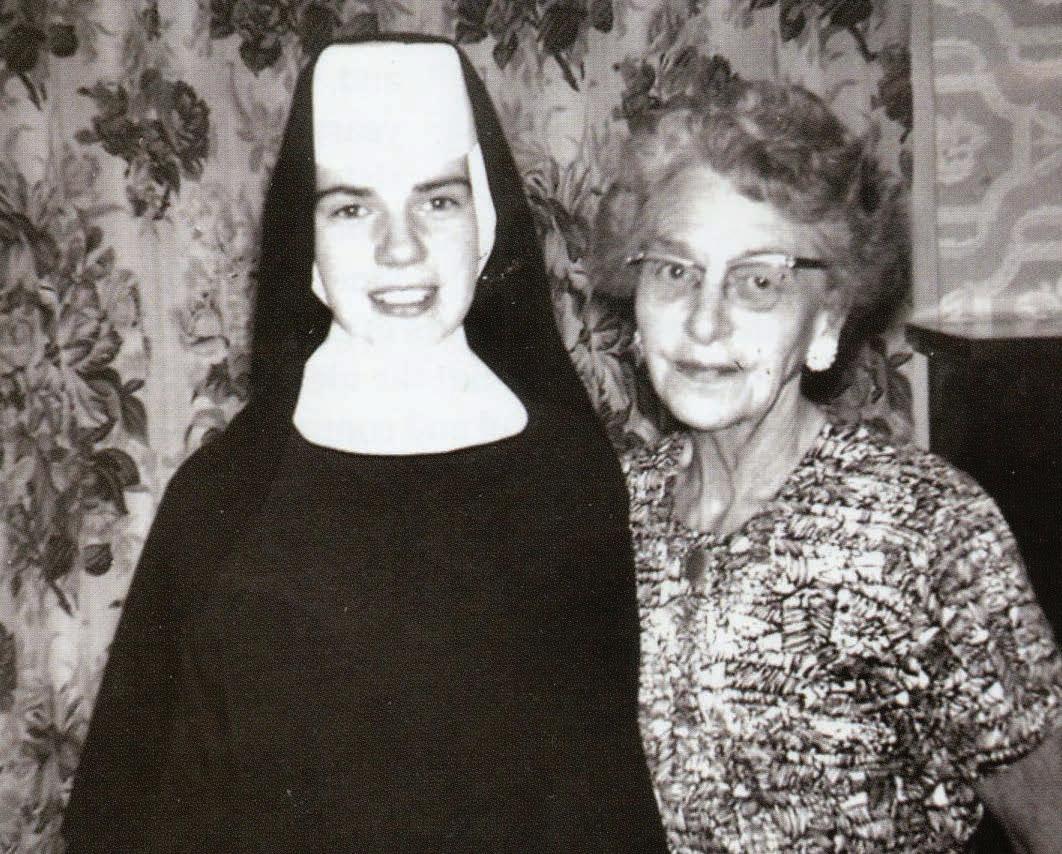
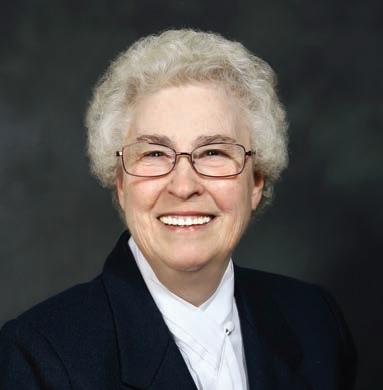
The clarion call of her mother, Elli Feeney, to her 12 children to “come home now” for supper prepared Sister Ruth Feeney to listen carefully for the call of “another voice.” Elli called out the name of each of her children to come back home from wherever they were, to be present and eat the nourishing food she had prepared for them. The voice of the Creator Parent came through the family life of sharing, and often hardship, but was anchored by the parish church and attentive pastor in their small Wisconsin village.
As the third sibling but the eldest daughter, S. Ruth was her family’s “big sister.” This “big sister” position has influenced her always! She followed that divine call to Saint Bede Monastery in Eau Claire, Wis., which led her on to become an elementary school teacher, parish religious educator, listener and guide to many as a member of the monastery’s formation and leadership teams, as house coordinator and secretary, and wherever was needed—even as a successful coordinator of eldercare units.
S. Ruth’s academic preparation includes a bachelor’s degree in education from the College of Saint Benedict in St. Joseph, Minn., and master’s degrees from both Saint Meinrad School of Theology in Saint Meinrad, Ind., and Loyola University in Chicago, Ill. She also earned a certificate in spiritual direction at Creighton University in Omaha, Neb.
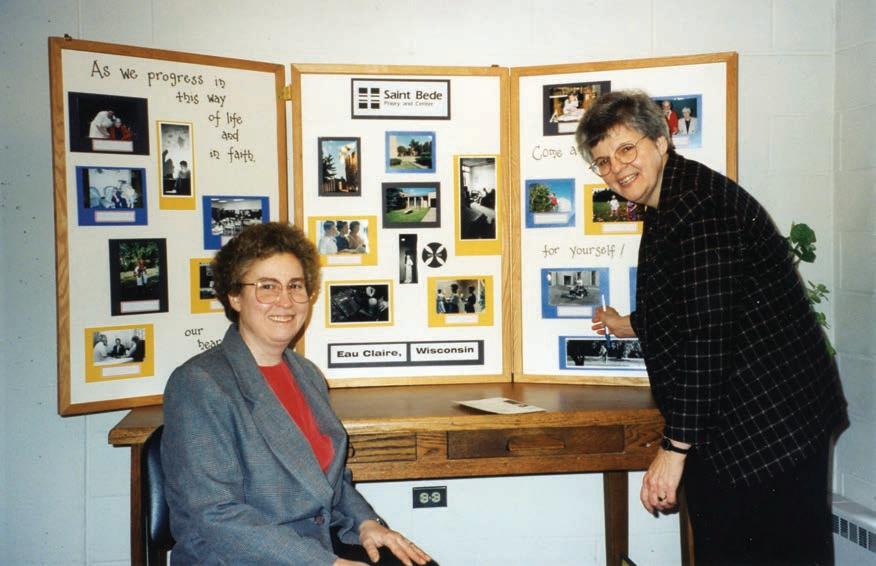
Judy Kramer, OSB
S. Ruth’s usually quiet, observing nature can be roused to speak up firmly when the need arises. This is noted in the true story that as a very young “big sister,” she mounted a kitchen chair to watch as the struggling babysitter put a clean diaper on her baby brother. S. Ruth corrected the ill-fitting piece herself, including the hard-to-close safety pins— and the hapless babysitter later became S. Ruth’s monastic superior!
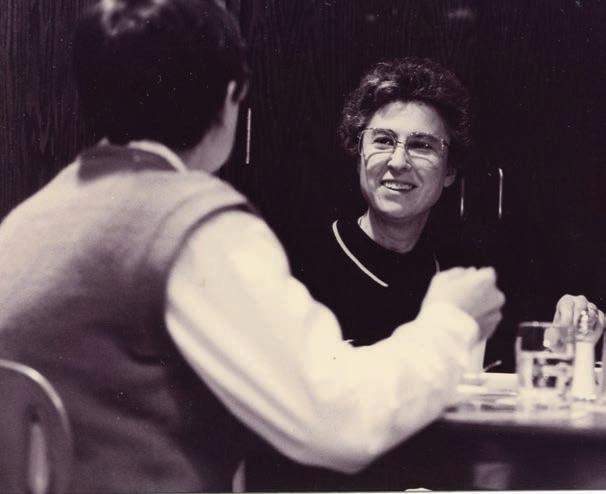
A certain “can do” aura accompanies S. Ruth at all times. Supported by her early-to-bed and veryearly-to-rise regimen and her rapid step to the next task, she is always ready to confront a problem or listen yet again to the story. Yet, in her own quiet time, she is reflective and often prone to record her prayers and thoughts in touching poetry. Often asked if she has ever thought of publishing her notebooks full of poetry, S. Ruth only smiles and changes the subject.
With a deep reverence for the movement of the Spirit sent by God, S. Ruth reads and reflects often and is a constant at monastic liturgies. She loves a good laugh even when it is at herself. Her deep concern for the well-being of others leads her to tell this story about herself: The school principal was so concerned that whatever she was giving up for Lent made her so crabby that she was kindly advised not to take on giving up her coffee as a Lenten penance!
The years have gone by quickly, but one never outgrows the need for a big sister!
S. Ruth (left), serving as director of vocations at Saint Bede Monastery, and Sister Judy Kramer
Karen Rose, OSB, Prioress
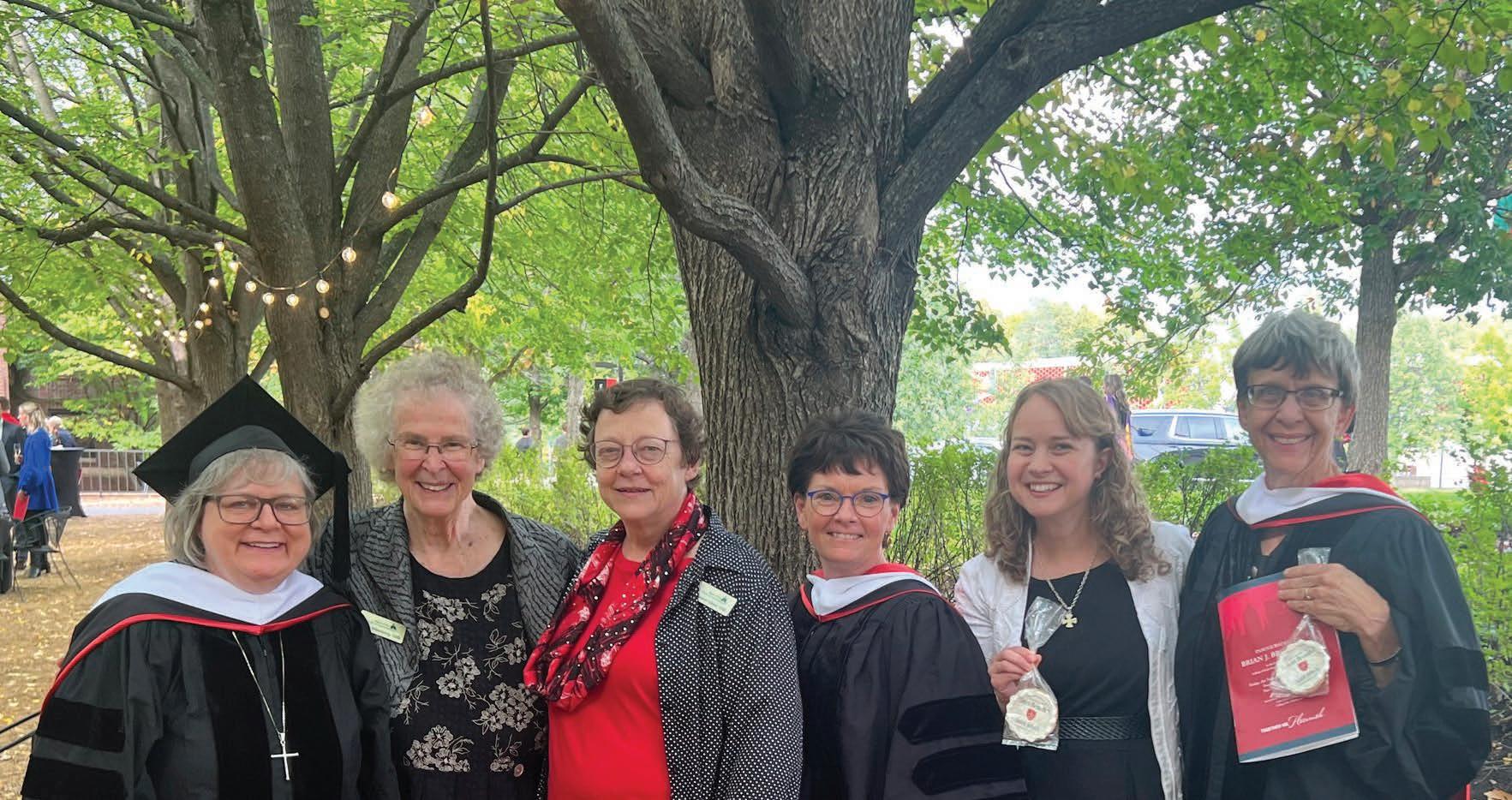
Left to right: Sisters Karen Rose, Joyce Willenbring, Julianne Gilbert, Colleen Quinlivan, Laura Suhr and Lisa Rose at the inauguration of the College of Saint Benedict and Saint John’s University’s first joint president, Dr. Brian Bruess. Photo taken by Trisa Schaeffer, assistant director of external engagement at CSB+SJU.
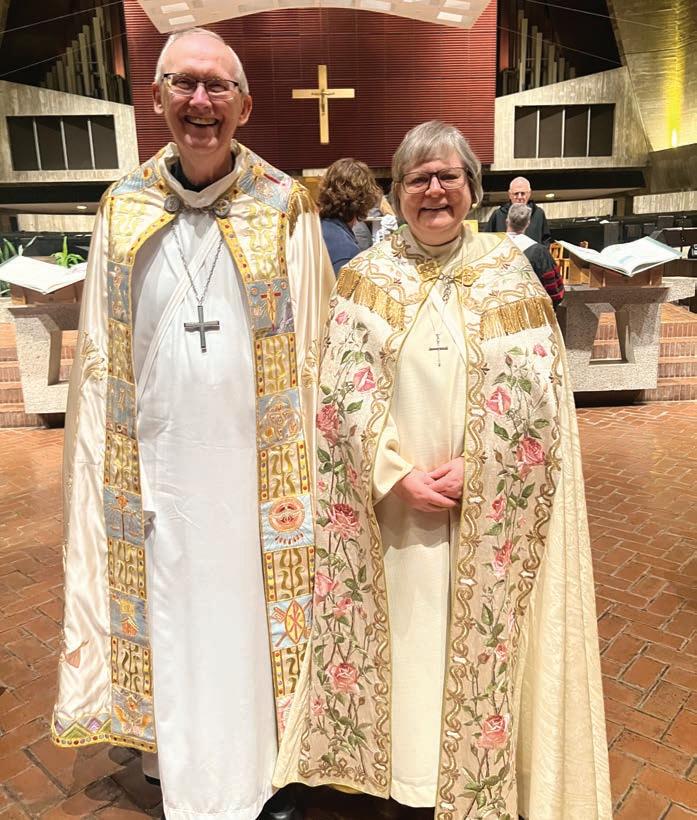
Above: S. Karen (right) with Father John Klassen, then-abbot of Saint John’s Abbey, at the 25th anniversary of the commissioning of The Saint John’s Bible.

S. Karen (right) at her installation as prioress with Bishop Patrick Neary, bishop of the Diocese of St. Cloud.
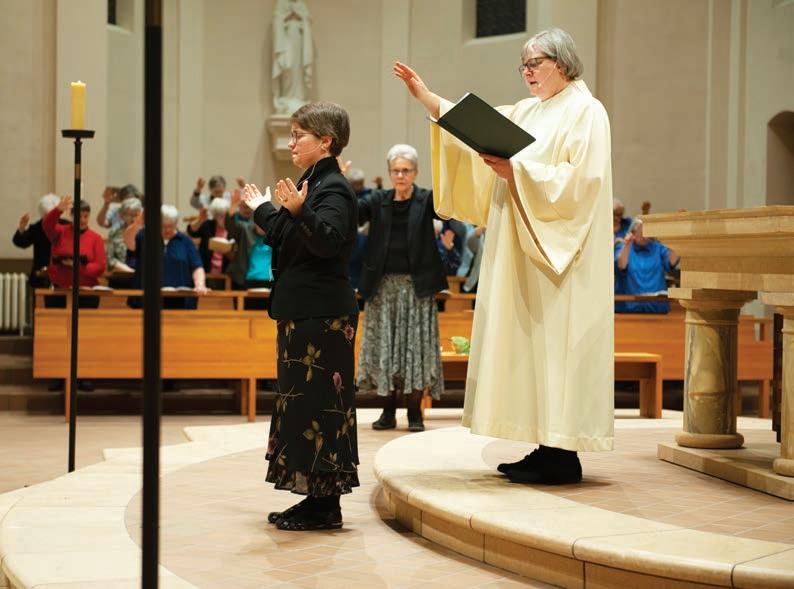
“Now well into my second year as prioress, I can look back on the first year with some objectivity. It had its highs and lows. Major feasts like Christmas and Easter took on a deeper meaning as I prepared reflections and led some of the services. I have gotten to know my sisters in new ways, and I’m truly inspired by their stories.
There are, of course, challenges. I recall a situation arising soon after my installation to which my reaction was: ‘I’m the prioress, and I have no idea what to do about this!’ The grace was that after consultation with wise and experienced sisters, we found a way forward.
In the end, ‘gratitude’ is the word that springs to mind as I reflect on my first year—gratitude that my sisters are always there for me, and gratitude for the many people who support us with their prayers.”
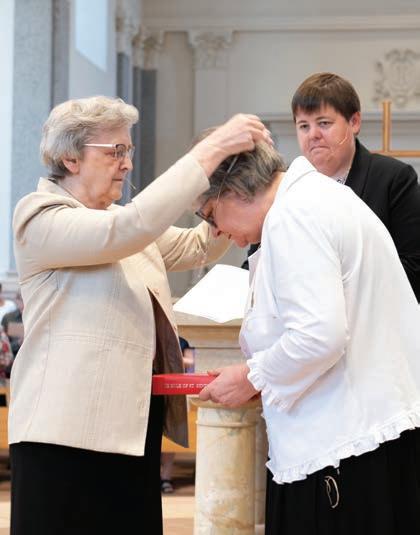
“There’s no shortage of music that connects to these Benedictine values,” says Dr. Adam Kluck, who taught as visiting assistant professor of music at the College of Saint Benedict and Saint John’s University (CSB+SJU) during the 2023–2024 academic year. His career has been a winding path since receiving his Doctor of Musical Arts degree from the University of Wisconsin-Madison. In the summer of 2023, he rounded a turn that led to CSB+SJU.
Dr. Kluck had just spent one year teaching at Virginia Tech in Blacksburg, Va., and previously taught in Wyoming, Iowa and Colorado. A love for Minnesota’s thriving choral culture drew him and his family to this year-long position at CSB+SJU. He was surprised to quickly discover a prior connection to the Sisters of the Order of Saint Benedict when he arrived: He had once put on a benefit concert at Benet Hill Monastery in his hometown of Colorado Springs, Colo.
Early in the interview process, Dr. Kluck was inspired by the unique hospitality demonstrated at CSB+SJU. The support and encouragement he received from colleagues during a hymns concert early in the year solidified a desire to dive into Benedictine values through music. His efforts manifested in a concert entitled “Sacred Music for the Living,” which was performed at Sacred Heart Chapel on May 3, 2024.
The project was made possible by a professional development grant that Dr. Kluck received with the
Alyssa Tasto
help of a letter of enthusiastic support from Father Anthony Ruff of Saint John’s Abbey, Collegeville, Minn. Sisters Janine Mettling and Elaine Schroeder were also named as pillars of encouragement during the project’s development.
The choir and audience were modest in numbers, but the project was a fulfilling experience for those involved. Dr. Kluck was able to exercise his range of skills as he searched for music that connected to each Benedictine value and reimagined larger pieces to fit the group of eight world-renowned singers who joined him in this unique experience.
Despite the stylistic constraints of a small choir and no instruments, Dr. Kluck believes this format was ultimately beneficial. In total, the choir spent only 10 hours together, yet he reminisces fondly on the strong connections he was able to make with each singer due to the group’s size. The connections, he says, were the most fulfilling aspect in many ways.
Kluck directing “Sacred Music for the Living”
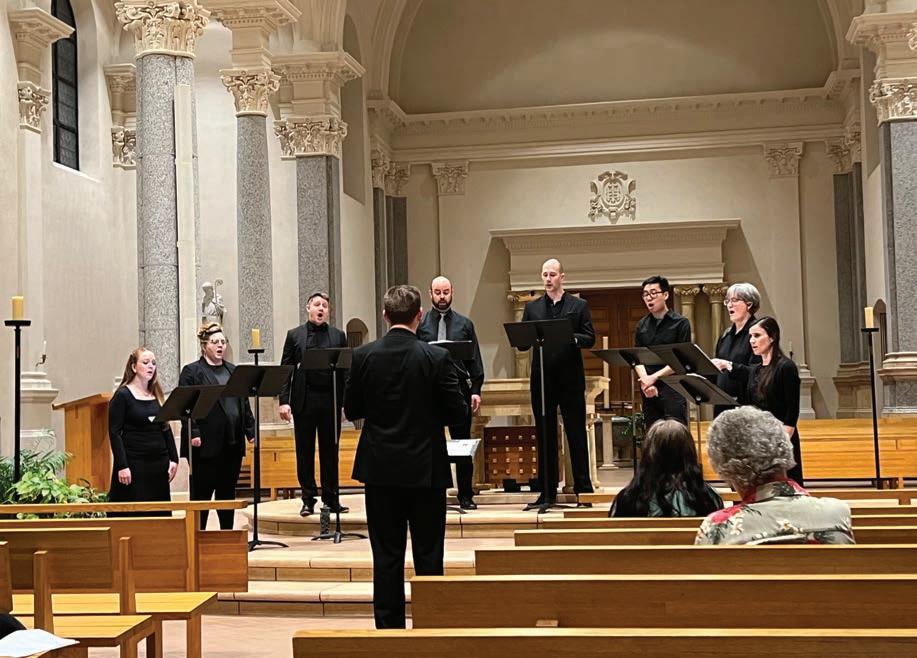
Dr. Kluck will now join the faculty at Wright State University in Fairborn, Ohio, as director of choral studies. He and his wife, Kristen, along with their three small children, look forward to their new journey. On moving on from CSB+SJU, Dr. Kluck expresses his gratitude for the thoughtful actions of the monastic community here, which he says, “changed [his] life for the better” and inspired him to find “the spiritual fulfillment and benefits of every little part of life.”
On September 16, 2023, five women made their perpetual oblation, offering themselves to God as oblates of Saint Benedict’s Monastery and promising to dedicate themselves to the service of God and all people according to the Rule of Benedict.
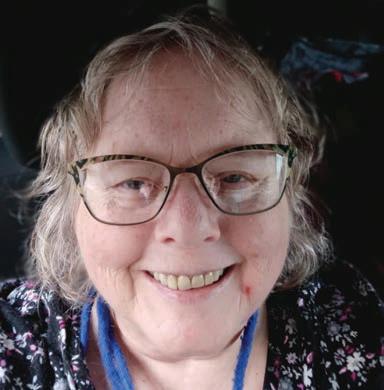
“This was my first year as an oblate of Saint Benedict. It has been a fun year. Every two months or so, we gather for Oblate Sunday, and we also had a Lenten retreat. I am also involved in a Benedictine oblate book club. We are currently reading St. Benedict’s Toolbox by Jane Tomaine. Each chapter suggests a number of ways to apply the Rule of Benedict to our own lives, making it personal. The book club meets once a month for 90 minutes. It has been an enriching experience, both the reading and getting to know the other oblates.
So, what inspired me to become an oblate? I grew up Lutheran, and my neighbors were Catholic. I wanted to be a nun, probably from watching ‘The Sound of Music’ as a child. Fifteen years ago, I took a course on St. Benedict at Saint John’s University in Collegeville, Minn., and I have been studying St. Benedict in various venues since then. Now I am a Benedictine oblate, as close to a nun as I will ever be.”
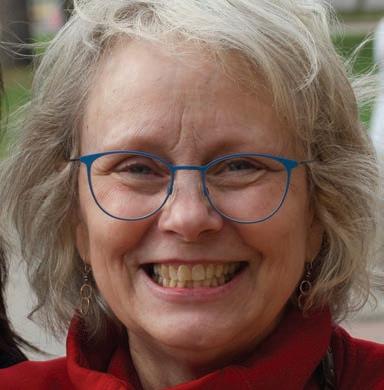
“‘Oblation’ is a word not heard in everyday conversation. The lack of its usage may have to be at the heart of its definition. Oblation is an act of presentation or offering of self to God. For most modern people, the desire to present oneself to God for any reason references ancient sacred rites found only in unread history books or unattended church liturgies. And yet, for those whose seeking heart still captivates and compels them toward a relationship with God, the act of oblation satisfies the innate need we have as humans to make tangible that which seems so intangible and elusive.
For this reason, I made my oblation to Saint Benedict’s Monastery in September 2023. After a lifetime relationship with Benedictines, who witnessed and taught me about the faithful rhythms and commitments of a shared Christian life, I desired to say aloud, ‘I belong here.’ It took me a while to get to this moment, making it even more poignant. So, with promises before God, the monastic community, and their oblates, and with a few tears, I presented myself to continue in the way of St. Benedict as a learner and fellow journeyer in faith.”
Sister Karen Rose, prioress (left), with oblates Mary Eisenschenk, Mary Parks, Laurice Anderson, Janice Bros and Mary Ann Marschall (left to right) at Oblate Renewal Day
Mary Ann Marschall, OblSB
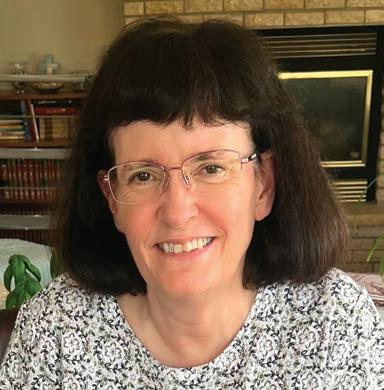
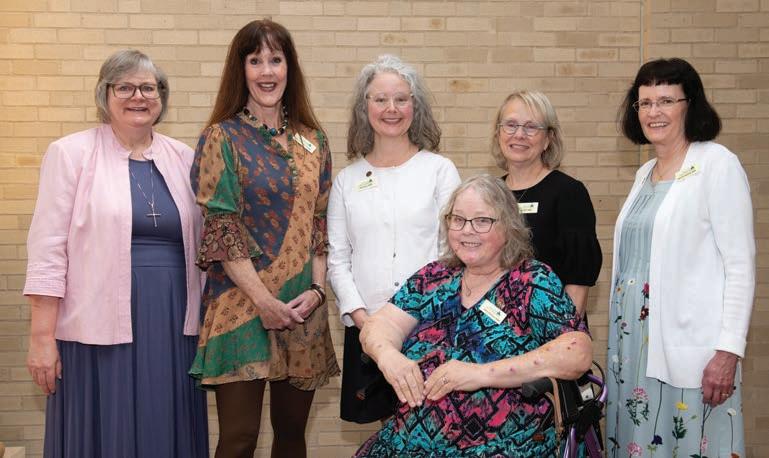
“When I first read the Rule of St. Benedict while in college, I was inspired by its first word: ‘Listen.’ Then, ‘Listen … with the ear of your heart.’ These words have inspired me throughout my life to listen to God. That listening led me to become an oblate, and the oblate way of life helps me to listen.
As an oblate, I find that I need to be flexible, adaptable and creative about how and when I listen to God. Sometimes I feel like life gets in the way of listening, but then I remember that being mindful of God throughout the day is listening. Benedictine practices, especially praying the psalms, lectio divina, and reading the Rule, as well as being part of the oblate community, help me to listen well. Listening well keeps me rooted in Christ and growing and changing to live, love and serve as God desires. Simply put, the oblate way of life is helping me to live the Christian life and my vocation as a married person and lay ecclesial minister more fully and authentically.”
Parks, OblSB
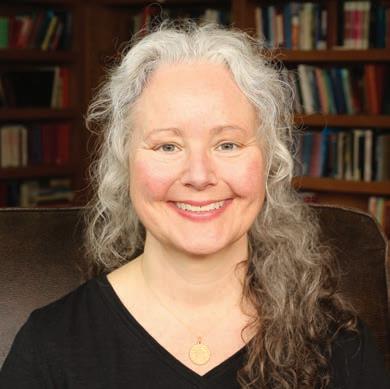
“Being an oblate of Saint Benedict’s Monastery enables me to be part of a community that shares the same values I do. For me, hospitality, stewardship and awareness of God are among the most important of those values. Through ongoing study and prayer with others, I am developing relationships which support me in becoming the person God created me to be.
Having a spiritual home at the monastery has led me to experience peace and belonging like never before. Thanks to the many sisters and oblates who were part of this community before me, I have also found the connection and stability which had previously seemed missing in my life. Now, in contrast, I feel that pleasant places have been laid out for me, and that a fair heritage is truly my lot!”
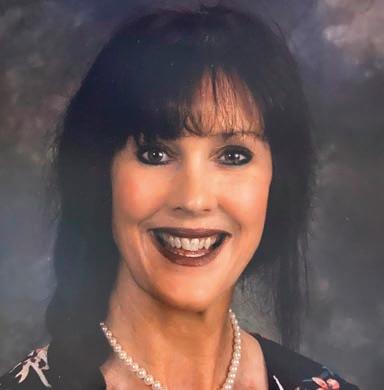
“For me, oblate formation was the beginning of a lifetime of learning, listening, reflection, self-examination, discernment and being humble, honest and vulnerable with myself along the way. I felt loved and accepted by the sisters and my fellow oblates on Oblate Renewal Day. I felt tremendous honor and humility to be forever connected to such a beautiful community of sisters, a true deep sisterhood. I felt the power of the Holy Spirit’s presence during Mass and as I signed my perpetual oblation on the altar, which moved me to tears of joy and immense humility. I am incredibly grateful for the unique and special spiritual graces of being an oblate and feel a deep commitment, solidarity and love for this beautiful community of monastic women and my fellow oblates.”
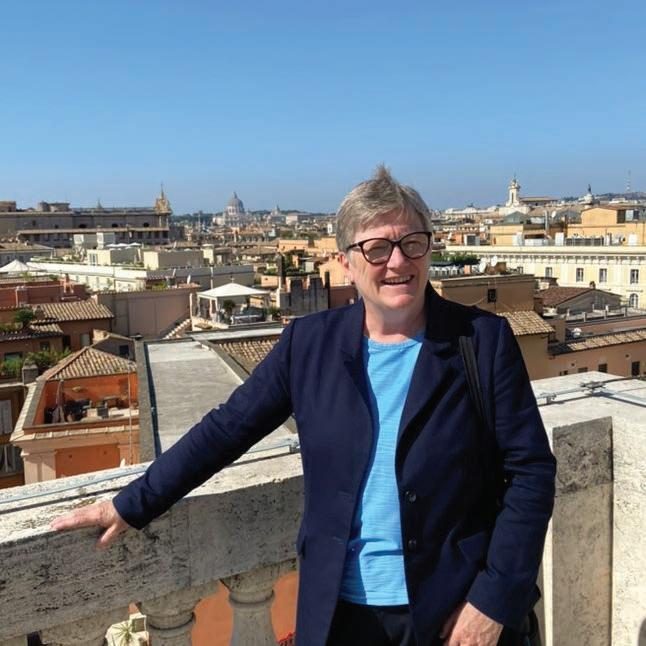
The second session of the
General Assembly this October will conclude the Synod on Synodality, the largest consultation in human history. “A synodal Church,” says Pope Francis, “is a Church that listens, which realizes that listening is more than simply hearing. It is a mutual listening in which everyone has something to learn. The faithful people, the college of bishops, the Bishop of Rome: all listening to each other, and all listening to the Holy Spirit, the ‘Spirit of truth’ (John 14:17), in order to know what he ‘says to the Churches’ (Revelation 2:7).”1 This priority of listening reflects the fundamental disposition of the whole Church as a community of disciples attuned to the will of God. The goal of the synodal process, stretching over a four-year period, is to help us all recover the practice of synodality.
Catherine Clifford
The Synthesis Report of the first session, which met in October 2023, affirms the prophetic witness of religious communities and their contribution to this renewal: “The Christian community also recognizes and wishes to be attentive to the practices of synodal life and discernment that have been tried and tested in communities of consecrated life, maturing over the centuries. We know that we can learn from them wisdom in how to walk the synodal path.”2
The whole Church can learn and receive from the rich heritage of Benedictine spirituality, at the heart of which is an attitude of humble listening. When Pope Francis exhorts pastors to listen to their people, he is inviting them to return to the practice of the early Church, where bishops regularly sought the counsel and consent of the ministers and the people of their local church when making decisions. The Rule of St. Benedict offers a model of this ancient spiritual practice when it insists that the superior seek the counsel of all in matters of importance (RB 3).
1 Pope Francis, “Address of His Holiness Pope Francis. Ceremony Commemorating the 50th Anniversary of the Institution of the Synod of Bishops,” (17 October 2015), at: www.vatican.va/content/francesco/en/ speeches/2015/october/documents/papa-francesco_20151017_50-anniversario-sinodo.html.
2 XVI Ordinary General Assembly of the Synod of Bishops, First Session, “Synthesis Report: For a Synodal Church in Mission,” (28 October 2023), 10, b, at: www.synod.va/en/the-synodal-process/phase-2-thediscernment-of-the-pastors/the-first-sessionofthe-XVI-assembly/documents.html. One might look to the other great Orders for additional examples of wisdom and practice: to the Dominican experience of participatory governance; to the Franciscan model of fraternity and mission; and to the Society of Jesus for rules and practices of discernment.
St. Benedict requires that the superior listen to and carefully weigh the views of “everyone” without exception before judging the wisest course of action. He urges them to attend in a special way to young members of the community since “God often reveals to the younger what is best” (RB 3). While one may be tempted to dismiss the young as naïve or lacking in experience, they are likely less invested in “the way things have always been done.”
The superior is to “show no favoritism” but rather demonstrate “equal love for everyone,” even while acknowledging and adapting to the great diversity of character, gifts and needs present among community members. In matters of lesser consequence, the superior is to seek the advice of senior members. “Do all things with counsel, and afterward you shall have nothing to regret (Sirach 32:24)” (RB 3). The process of shared discernment, of asking for and giving counsel, is not a case of winning others over to one’s point of view, but rather of discerning together where God’s Spirit is leading. These are habits that the whole Church
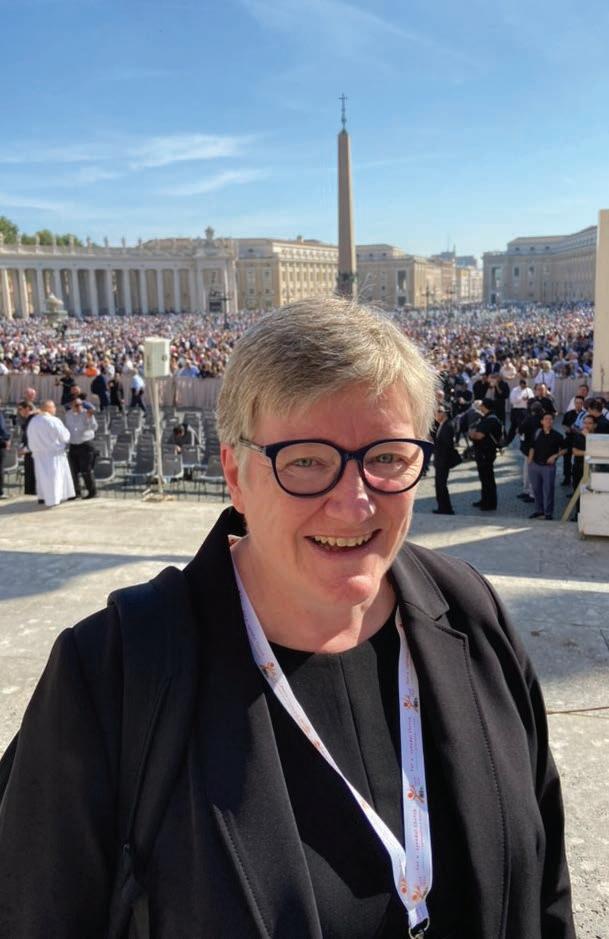
is beginning to recover as it renews the practice of synodality.
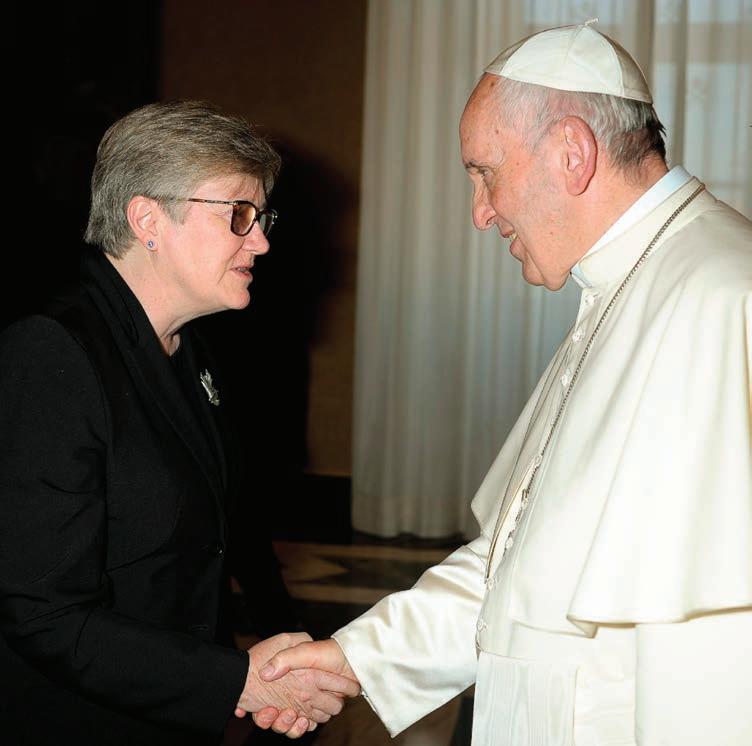
Catherine E. Clifford is professor of systematic and historical theology at Saint Paul University, Ottawa, Canada. Her teaching, research and publications focus in the areas of ecclesiology, ecumenism and the history of the Second Vatican Council. Catherine serves as a member of the Methodist-Roman Catholic International Commission and is vice president of the Catholic Theological Society of America. She is a delegate to the XVI General Assembly of the Synod on Synodality.
Her recent publications include Vatican II at 60 (Orbis, 2024), co-edited with Stephen Lampe, and The Oxford Handbook on Vatican II (Oxford UP, 2023), co-edited with Massimo Faggioli. She also studied in Studium, the monastery’s program for scholars, from January through April 2024.
Carol Berg, OSB
Much of the following information is taken from a dissertation by Sister Nora Luetmer for her doctorate program at the University of Minnesota. She traced the history of Catholic education in the Diocese of St. Cloud during the years 1855–1965 with a focus on elementary schools. I give a synthesis of her work, adding new statistics for later decades.
The first Benedictine sisters arriving in Minnesota in 1857 came from a motherhouse in Bavaria having education as its major outreach ministry. That ministry carried over to the Minnesota territory; within the first year of settlement, the sisters opened a school, first in St. Cloud and later in St. Joseph and neighboring towns. Most of the sisters spoke German as their first language and had to be tutored in English, true of many pupils as well. By the 1870s, English was required in the state schools, and the sisters themselves were usually proficient. A major increase in the education ministry came after 1880. By then, Saint Benedict’s Monastery had 57 professed sisters and was serving several missions: eight day schools and two boarding schools.
In 1889, the Catholic Directory listed 10 parochial schools in the Diocese of St. Cloud with approximately 1,400 children. By 1893, that number grew to 17 parochial and 15 district schools, and the need for more teachers multiplied yearly. On the monastery campus, Saint Benedict’s Academy (later Saint Benedict’s College) had
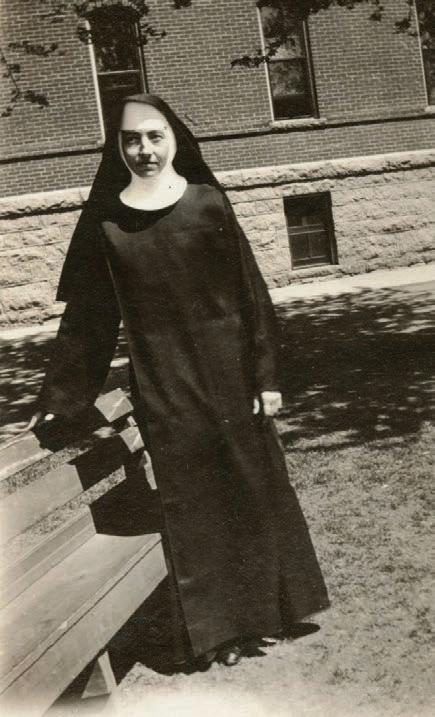
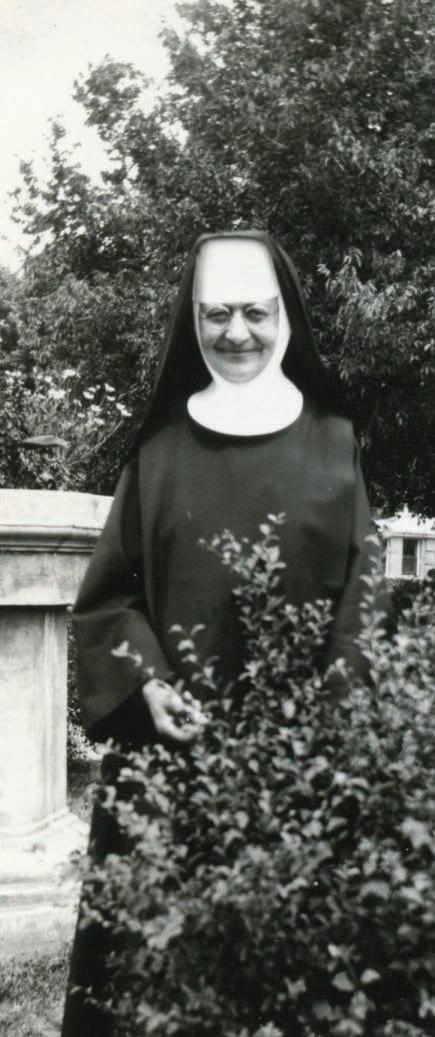
75 pupils. Clearly, this was a “take-off” period for the sisters’ education outreach. Community membership totaled 210 professed sisters, the majority being trained as teachers.
In 1901, records show a total of 9,000 elementary students and 5,000 secondary ones in parish schools, mostly taught by the sisters— though a few laypersons were hired, mainly at the high school level. Teacher training lagged, as only one state (Indiana) required even a high school diploma for teacher certification. A handful of sisters, however, earned graduate degrees between 1912 and 1915, among them some well-known names: Sisters Jeanette Roesch, Digna Wieland, Irma Schumacher and Grace McDonald. As of 1919, 100 sisters at Saint Benedict’s Monastery were completing work for state certification.
The Diocesan Teachers College opened in St. Paul, Minn., in 1927, and many sisters earned their teaching credits there. In addition, the Minnesota Compulsory Education Act was passed—children ages 7–16 had to attend school, and the sisters prepared to staff more and bigger schools. The growth of the College of Saint Benedict in St. Joseph, Minn., helped greatly; it received state accreditation in 1934. Its education department became the center of efforts to train sisters and students for an ever-expanding education ministry throughout the diocese.
Between 1930 and 1946, the monastery experienced constant growth with over 1,000 members during that span, providing a steady pool of staff for education and health care ministries. In 1943–1944, for example, 38 schools were entirely staffed by the sisters, and in 1954–1955, there were 40. A 1957 diocesan Sunday Visitor newspaper article listed 52 elementary parish schools with an average of eight to 10 sisters as staff. Saint Benedict’s Academy, Cathedral High School, St. Boniface High School, and Father Pierz High School were expanding enrollment as well.
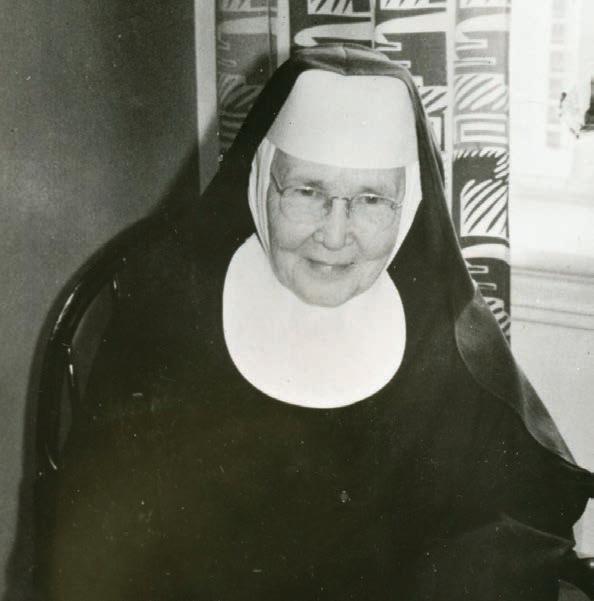
As that decade opened, the monastery seemed flush in numbers—945 sisters in 1962 in final profession. Over half were teachers, the rest serving in nursing homes or hospitals. But major problems were looming: Advancing age and lack of sister personnel caused the closing or merger of many parochial schools in the early ‘70s. In 1975, the monastery totaled 795 members, with approximately 90 in elementary education. By the 1980s and ‘90s, very few parishes had a full staff of sisters.
Short of sisters, especially with graduate degrees, the prioresses urged Bishop Peter Bartholome, then-bishop of the Diocese of St. Cloud, to hire more lay teachers as early as the mid-1950s. He reluctantly gave permission for a few pastors to hire one or two lay teachers, but overall, there was much foot dragging on this matter. Few could have foretold the dramatic changes coming in both the nation and Catholic Church during the 1960s.
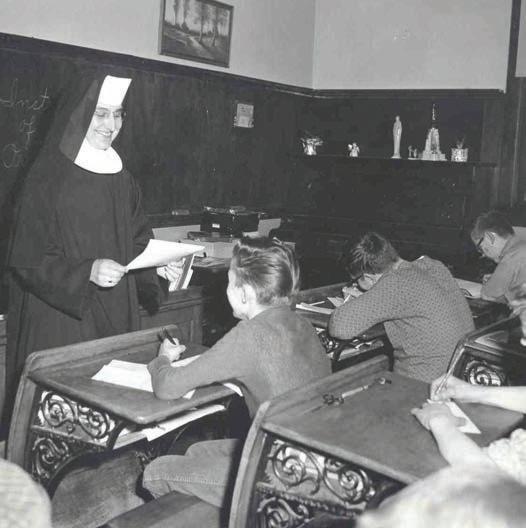
As of 2024, there are 29 Catholic schools in the Diocese of St. Cloud. With the recent retirement of Sister Janine Braun, the last Benedictine sister to hold a full-time teaching position in the diocese, dedicated laity are staffing these schools—and the sisters acknowledge this, while looking back with appreciation of their own 160+ years of work in education.
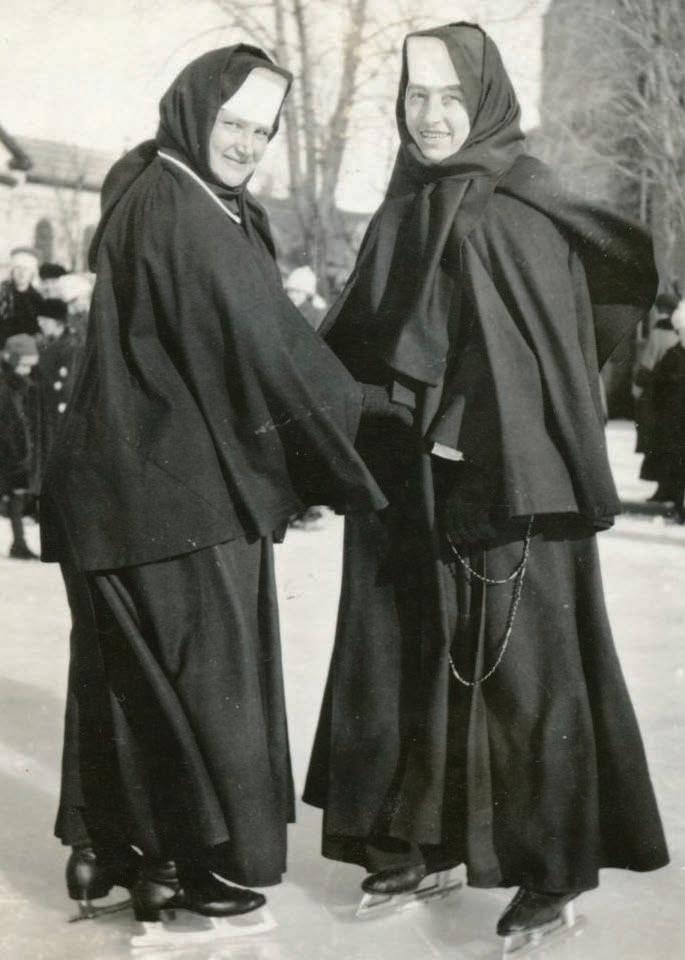
Margi Hollingshead, OblSB
What joy: an afternoon with sisters to discuss being wise! I had been invited by Mary Stommes, oblate director and oblate of Saint Benedict’s Monastery, to speak at one of our quarterly Oblate Sundays about my involvement in the two-year Growing in Wisdom program offered by a consortium of Canadian retreat houses.
Fashioned after a program on aging and spirituality conceived by Father Ron Rolheiser of the Oblate School of Theology in Texas, our Canadian program immersed us in the theology, research and experience of aging as people of faith. The program was challenging, fun and rich as we faced our aging bodies and minds and learned about “radical discipleship,” among other topics.
I was eager to share with the oblates, and also eager to hear from the many sisters whom I know to be wise women. Many of them are now at Saint Scholastica Convent, the sisters’ retirement community, so I asked if I might offer my presentation there. Granted! In addition, I had heartfelt discussions with sisters during my four-day visit at the monastery. Behind all the logistics lies a critical question for Benedictines:
How does the Rule guide us in becoming “radical disciples” as we grapple with our own aging and seek God’s face continually?
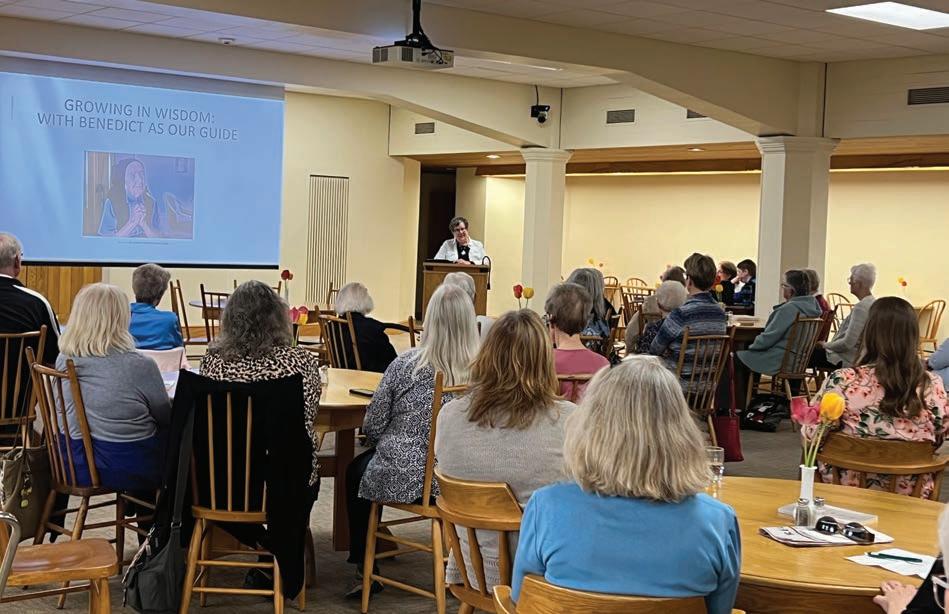
Radical discipleship in our later years includes:
1. Moving from control to surrender.
2. Shifting focus from our roles in life to the deepening of our souls.
3. Trading active engagement for passive acceptance.
4. Crafting how we will be remembered.
5. Recognizing that our egos diminish as we gain a larger picture of our contributions to the whole of creation.
We practice these elements by building our legacy (Will I be remembered as being bitter, irrelevant or wise?), forgiving ourselves and others, grieving our losses, blessing others, and carrying the tensions of the community.
As we explored these five elements/practices in more detail and discussed various aspects over cookies in Saint Scholastica Convent’s lounge, it was clearly a topic of interest. “We don’t talk about this stuff with each other—and we need to,” commented one sister. We talked about letting go, mourning our losses, feeling vulnerable, still grappling with ego. We identified examples of blessing others and carrying the tensions of the community. Sisters found the Rule rich in guidance: surrender our lives, let go, deepen our souls, avoid grumbling, honor the elders, remain engaged in community, live for the benefit of all.
Our time together felt like a springboard to growing in wisdom. Perhaps there is an opening for book studies, further seminars or intentional discussions on being radical disciples under the guidance of St. Benedict and to the glory of God. Let’s begin.
Alyssa Tasto
Living eight miles east of Buckman, Minn., with her husband and three daughters, Jackie Moren spent 10 years as food service manager with the Franciscan Sisters of Little Falls in Little Falls, Minn., before beginning her search for work closer to St. Cloud, Minn. On July 2, 2007, she started anew at Saint Benedict’s Monastery. Seventeen years later, Jackie remains a dedicated worker with a love of learning. Starting out as a full-time evening cook, she was trained in the kitchen, bakery and dining room. In 2022, she moved to the daytime shift.
Jackie arrives to work at 5:30 a.m. She prepares breakfast items for the sisters, checks cooler temperatures, gathers cleaning supplies, and reviews menu changes and attendance for meals. Before her workday ends at 2 p.m., she has cooked for two meals and already begun preparing the kitchen for the day to come. At home, she cares for her elderly mother—a labor of love that occupies her evenings and weekends.
“I get really attached to the sisters … basically, they’ve become some of my best friends,” Jackie states, recalling the unique relationships she has formed throughout the years at Saint Benedict’s Monastery. The sisters’ hospitality, she notes, is unmatched by other work environments—be it offering a place to stay when winter weather hinders a safe trek home, notes of appreciation during strenuous times, or prayer blankets made for comfort following a major surgery. She feels that the kindness shown by the sisters has helped sustain her through the high and low seasons of life.
Continuing education is of utmost importance
to Jackie, who maintains multiple certifications. She completed High-Risk Establishment Food Safety Training through Stearns County and is a certified food protection manager through the State of Minnesota. Through the Certifying Board for Dietary Managers, she is also a certified dietary manager and food protection professional.
Jackie credits her position at Saint Benedict’s Monastery with her ever-growing appreciation for the use of fresh, garden-grown produce in recipes. One of her dreams for the future—to educate children on food and cooking—is inspired by a young boy for whom her mother provided daycare. Jackie recalls his reaction to her mother making cookies: “One of the little boys said, ‘You mean you put them in the oven, and you bake them?’ … [He] had never seen a cookie baked!”
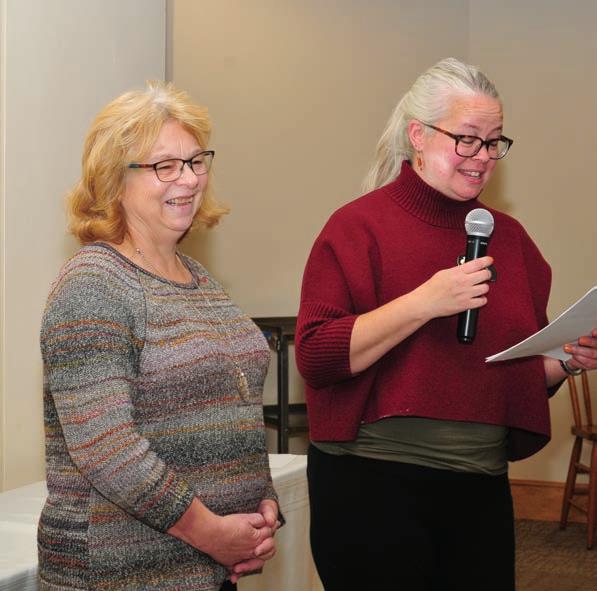
Jackie muses over the coming years as she nears retirement. That time will no doubt be spent with her grandchildren and in her many hobbies, which include fishing, crafting and collecting agates. Through her gardening, canning and baking, the culinary passion she has graciously shared with the sisters for nearly two decades will surely live on.
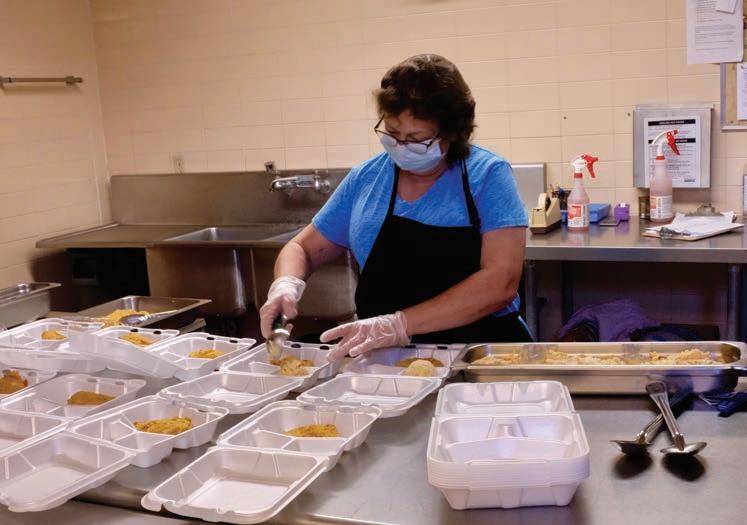
Jackie (left) with Holly Bollig, food service manager at Saint Benedict’s Monastery Jackie preparing meals to be donated to homeless people

4,698
2,583
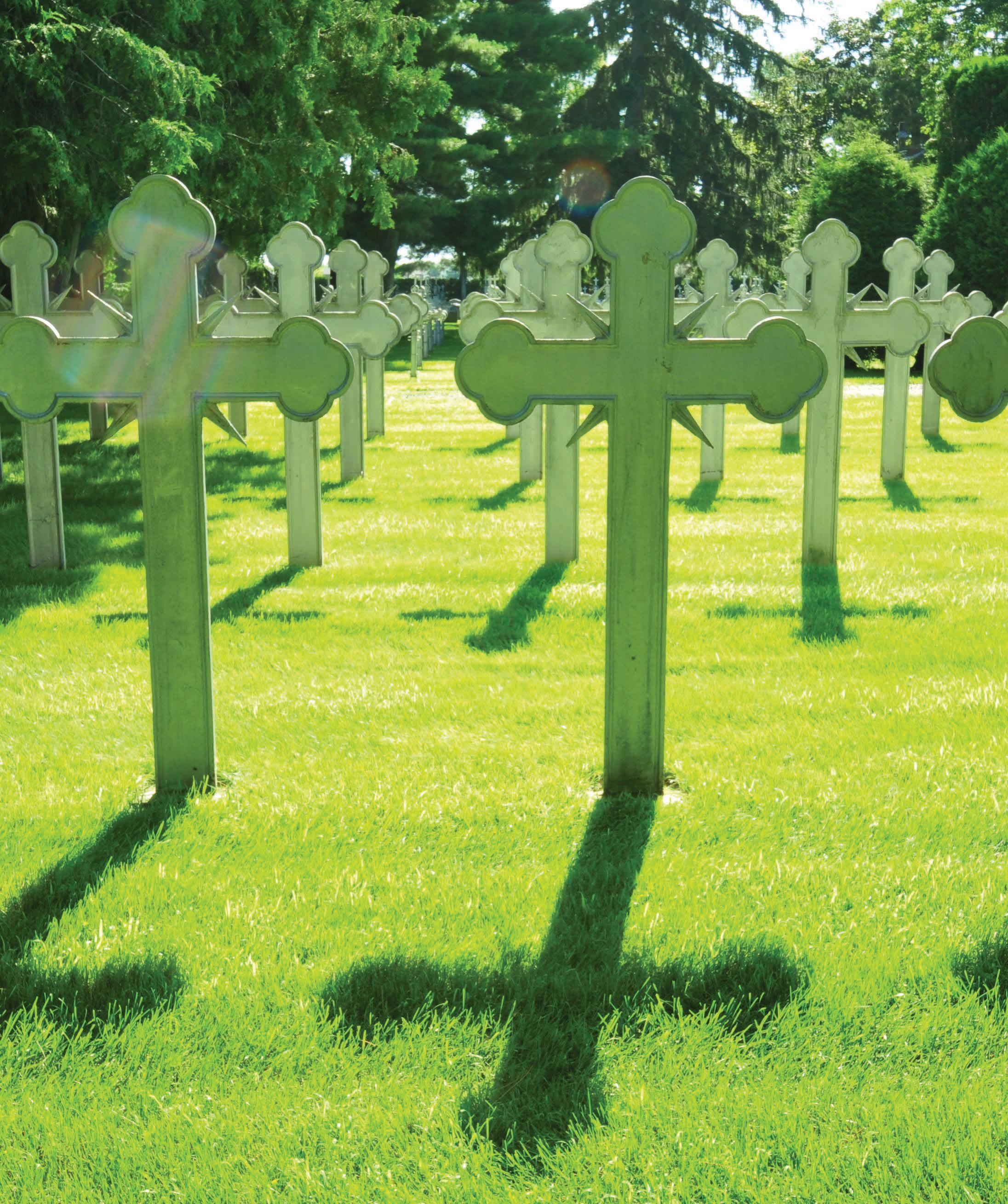
In loving memory of our dearly departed sisters who would have celebrated significant anniversaries in monastic life with this year’s jubilee classes.
Alard (Bernadette) Zimmer, OSB
Amelianne (Florence) Doll, OSB
Benedice (Henrietta) Schulte, OSB
Camille (Dorothy) Hilgers, OSB
Catherine (Alverna) McInnis, OSB
Clare (Clarion) Shadeg, OSB
Eleanor (Mary Magdalene) Kapfer, OSB
Francella (Hildegarde) Janson, OSB
Idamarie (Irene) Primus, OSB
Cathan (Rita) Culhane, OSB
Louista (Louine) Brausen, OSB
Madonna (Mary Ann) Niebolte, OSB
Marilyn (Bernice) Kulzer, OSB
Mary Ellen (Mercy) Machtemes, OSB
Rachel (Shirley) Radle, OSB
Keith (Hildegarde) Eickhoff, OSB
Lorraine (Annora) Sauer, OSB
Lynette (Florina) Primus, OSB
Mary Helene (Donna Marie) Juettner, OSB
Mary Jane Slaney, OSB
Nivard (Mary Ann) Neft, OSB
Olivia (Loretta) Forster, OSB
Raymond (Mildred) Doerfler, OSB
Norma (Leona) Meyer, OSB
Quidella Kollmann, OSB
Ruth Nierengarten, OSB
Shirley Frandrup, OSB
Terence (Elizabeth) Nehl, OSB
Marjorie (Rose) Hill, OSB
Marilyn Mark, OSB
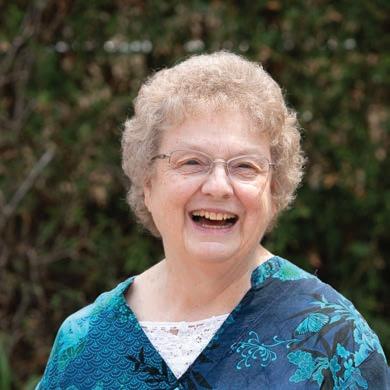
In a Eucharistic liturgy earlier this year, we heard the Gospel of Mark 8:27–33 in which Jesus asked his disciples, “Who do people say that I am?” Jesus asked the question, not because he did not know who he was, but because he wanted to know if the disciples knew who he was. He wanted to know if they had come to understand that he was the Savior, the Messiah.
Most of us, on the other hand, need other people to help us understand who we are, to reflect back to us what they see in us, to affirm our gifts and talents, and even to help us discern our vocation in life. Parents and friends often have this role as we are growing up. Later, we surround ourselves with other people, such as friends and colleagues, who do this for us.
As a young woman, I was blessed to be a music teacher while serving as a diocesan volunteer in Utah where I lived with graduates of the College of Saint Benedict who knew I was interested in religious life. They encouraged me to look at the Benedictines in St. Joseph, Minn. After several months of correspondence with the vocation director, I rode with some of the Benedictine sisters from Ogden, Utah, to Minnesota. As we approached Saint Benedict’s Monastery, I saw the chapel dome for the first time, and it felt like this was going to be my new home.
Although my path through religious life has not always been a straight one, I love community life, which is a prime focus for us as Benedictines, and
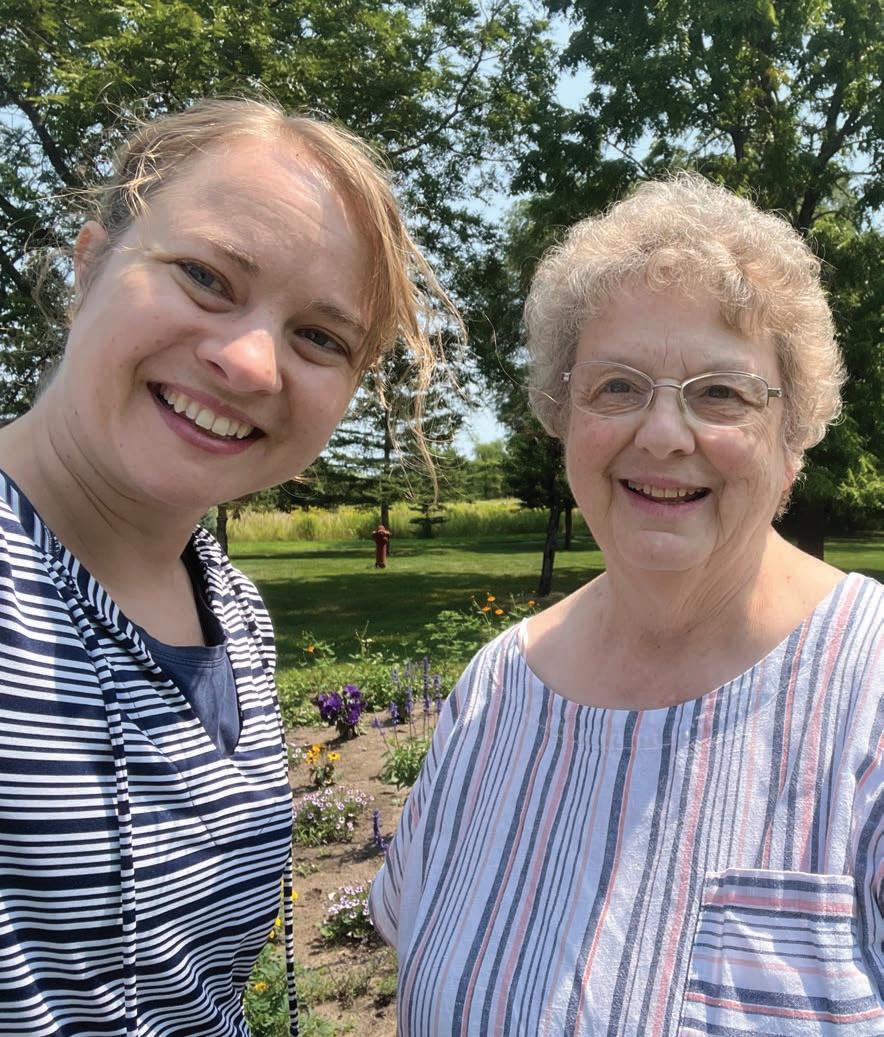
I love the psalms which we pray together every day in the Liturgy of the Hours. These ancient prayers speak to all of the human emotions we experience in daily life.
My advice to those who are considering a religious vocation is to volunteer in some form of ministry and to participate in a discernment or Life Awareness Retreat. Saint Benedict’s Monastery is among the religious communities that will sponsor a Life Awareness Retreat in Central Minnesota on February 8, 2025.
To inquire about a religious vocation or learn more about the Life Awareness Retreat, contact Sister Marilyn Mark, director of vocations, at osbvocations@csbsju.edu or (320) 363-7180.
In June, Saint Benedict’s Monastery welcomed a group of women participating in the Diocese of St. Cloud’s 2024 Nun Run! The Nun Run provides the opportunity for women to travel to different communities of women religious within the diocese and explore the monastic way of life.
After visiting with the Franciscan Sisters of Little Falls in Little Falls, Minn., the group stopped here at Saint Benedict’s Monastery where they joined us to pray Liturgy of the Hours and enjoy a meal with the community. After the meal, Sister Dorothy Manuel led a tour of our sacred spaces, and the visit concluded with presentations on monastic profession by Sister Laura Suhr and Benedictine charisms by Sister Nancy Bauer, president of the Monastic Congregation of Saint Benedict.
After spending time with us, the Nun Run participants traveled to Ghent, Minn., to visit the Sisters of Mary Morning Star. What a great experience to share the beauty of our Benedictine monastic way of life!
Photo: Sisters Marilyn Mark (front, second from right) and Dorothy Manuel (back left) with Nun Run participants
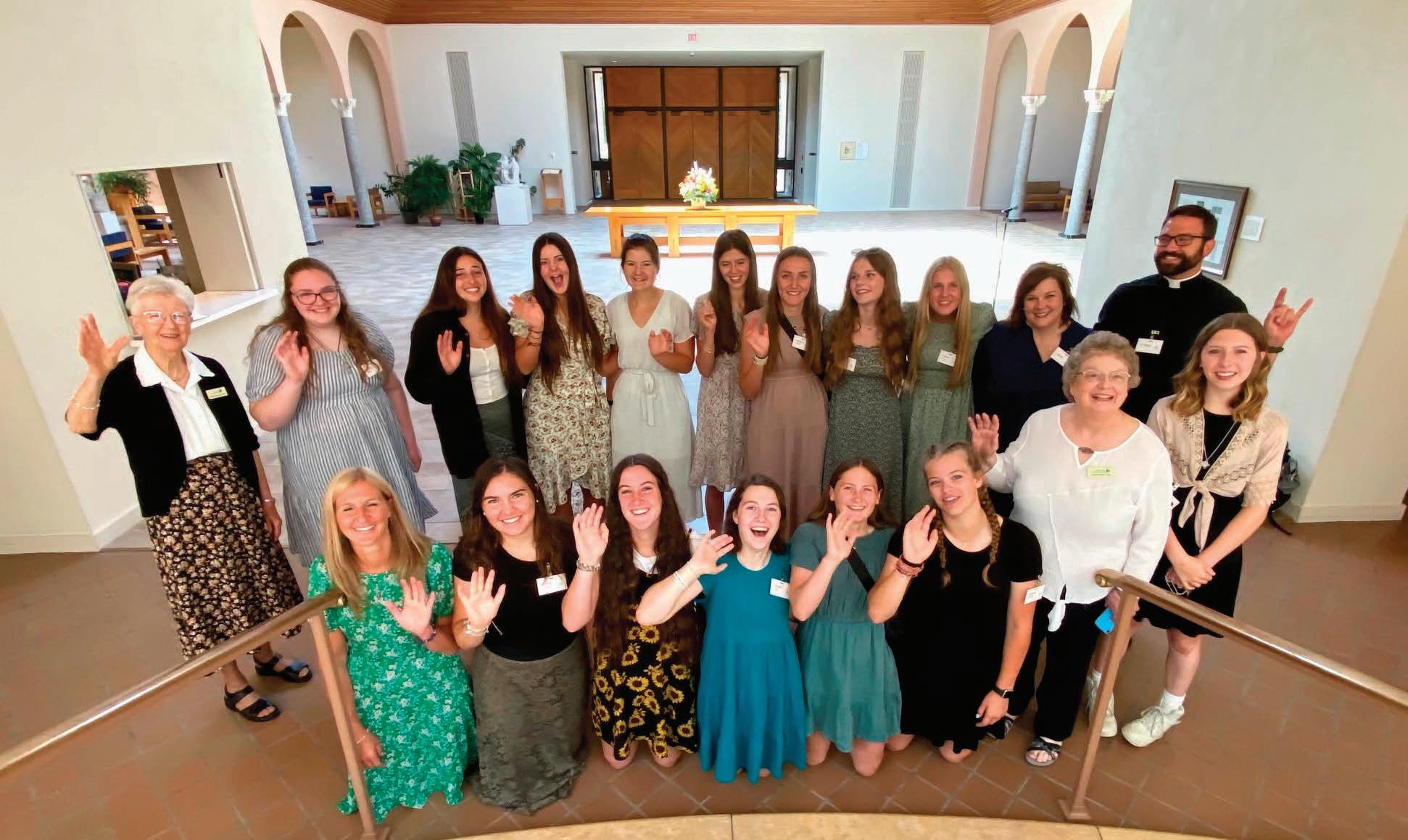
“Let us continue to grow together in Christ.”

The Office of Mission Advancement
104 Chapel Lane, St. Joseph, MN 56374-0220
(320) 363-7100 • www.sbm.osb.org




Address Service Requested
Please help us keep our mailing list current.
New address
Please remove my name

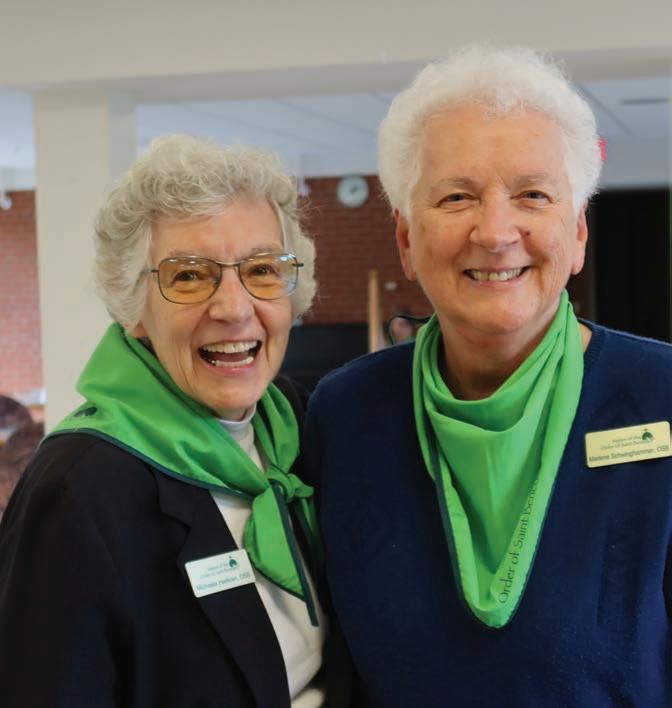
Receiving more than one copy (send all labels, indicating the correct one). Save the
Give to the Max is back on Thursday, November 21, 2024.
Mark your calendars for Thursday, November 21, 2024! We are excited once again to be a part of Minnesota’s Give to the Max Day, an annual online giving day, and look forward to your participation. Each year, we are reminded over and over again of the abundant generosity and support of you, our friends.
As Sister Karen Rose, prioress of Saint Benedict’s Monastery, shared in her letter at the beginning of this magazine, all donations received during this year’s campaign will go toward building an organ for our new chapel in the new monastery. We will share specific details in the coming weeks. Please check our website and follow our social media channels for updates. Blessings to you!